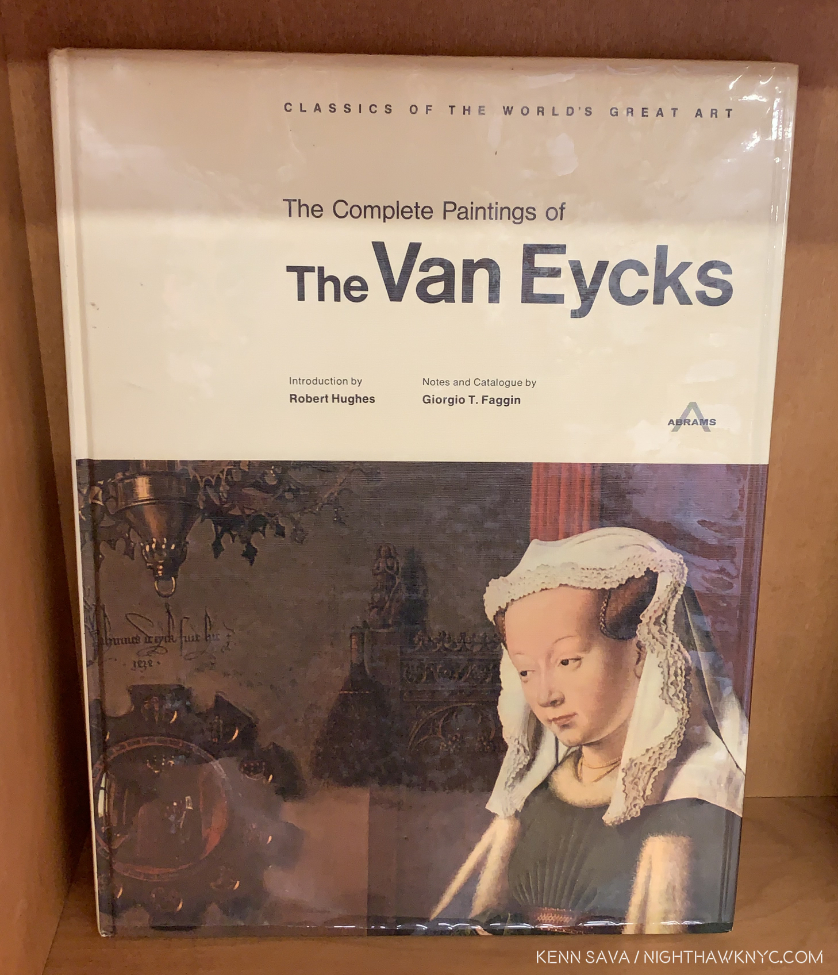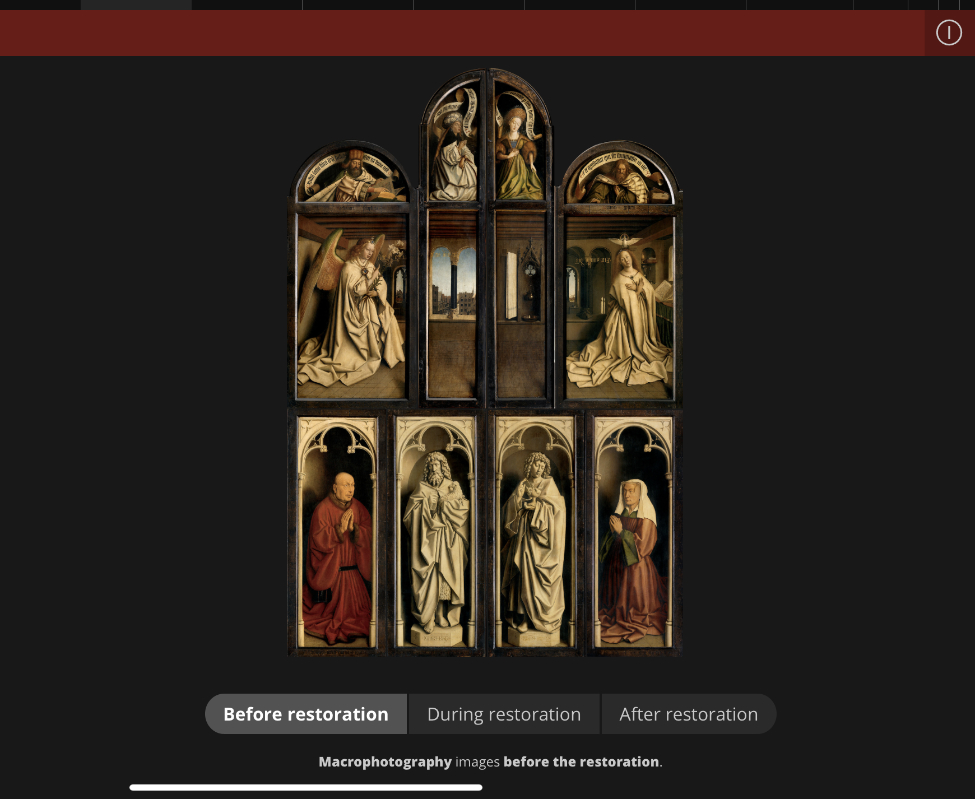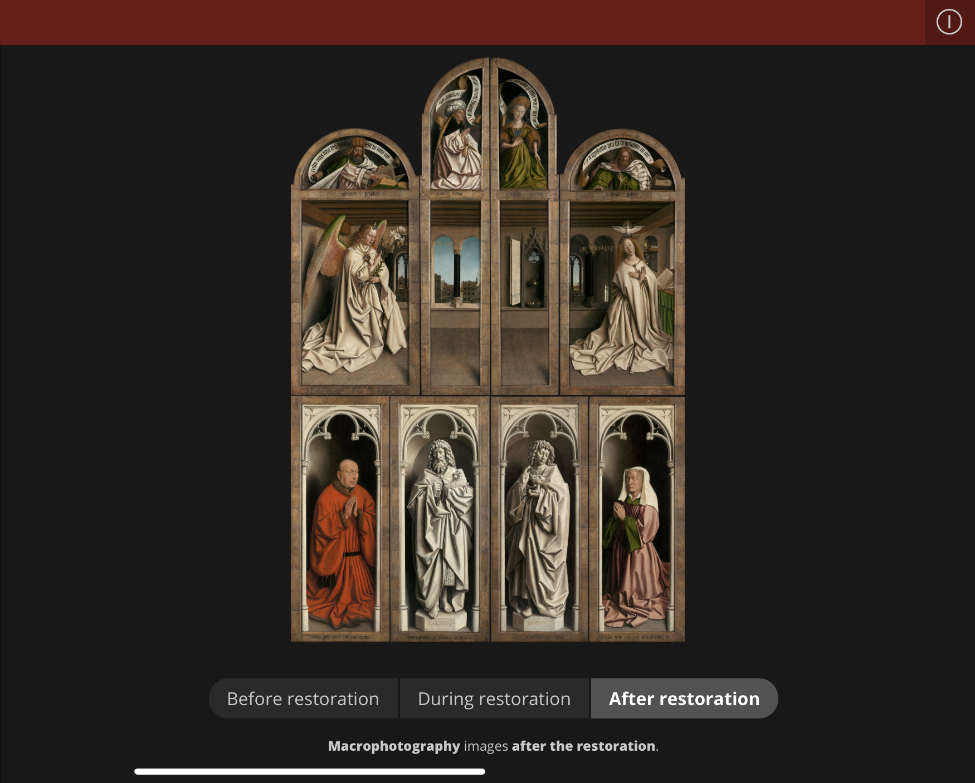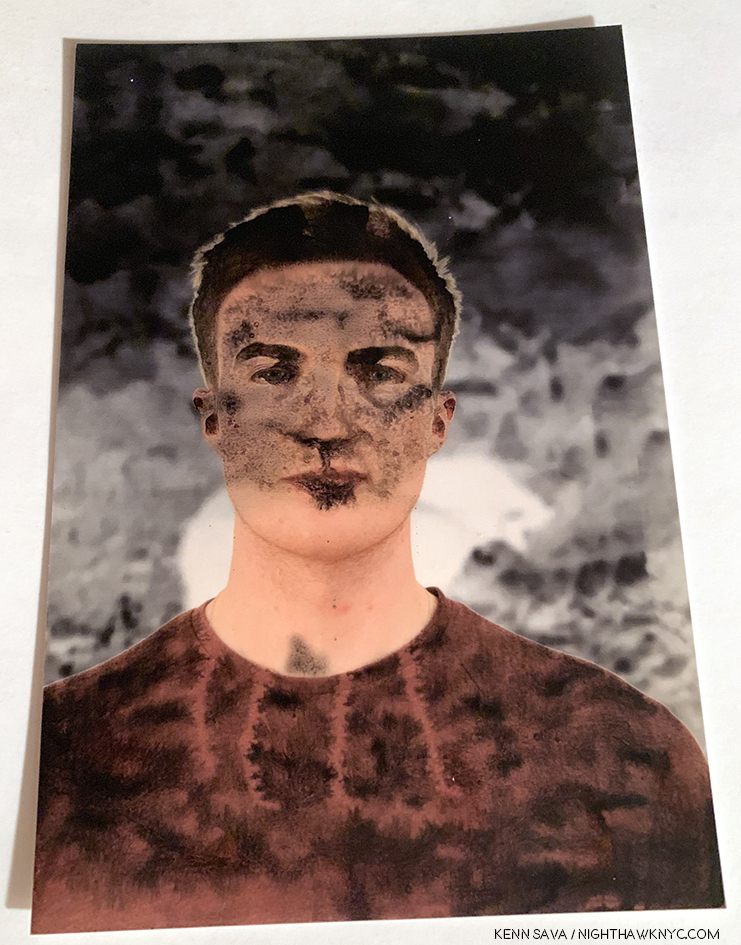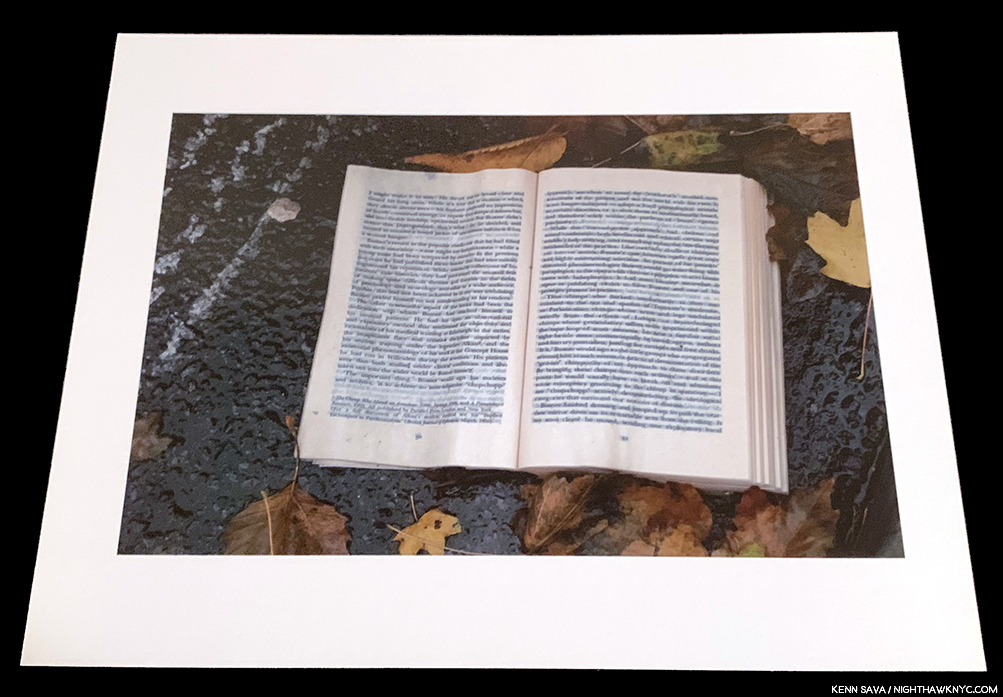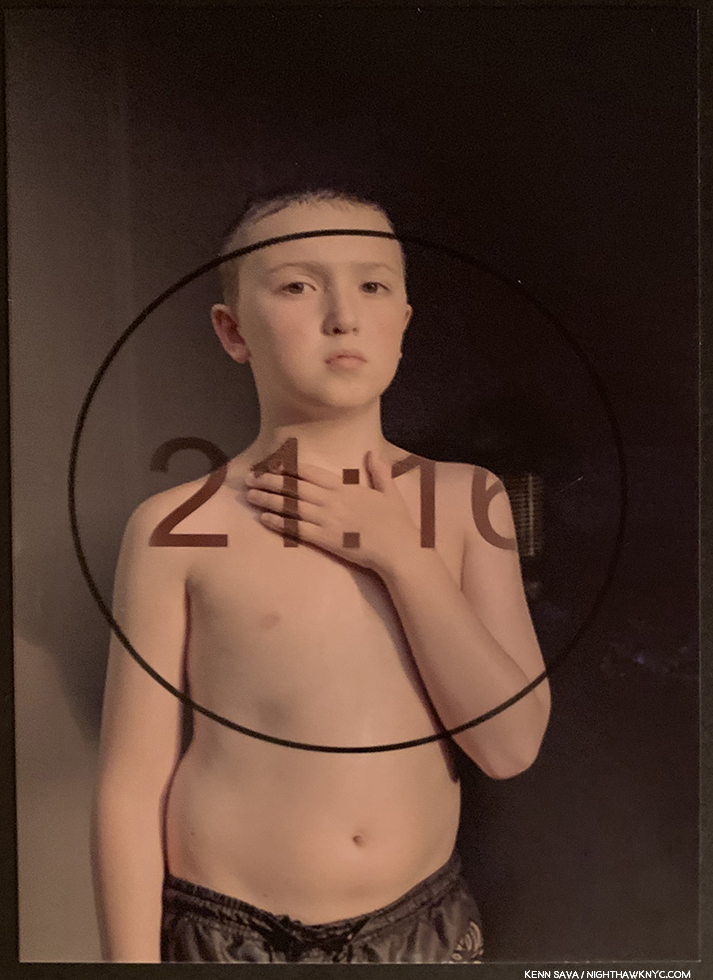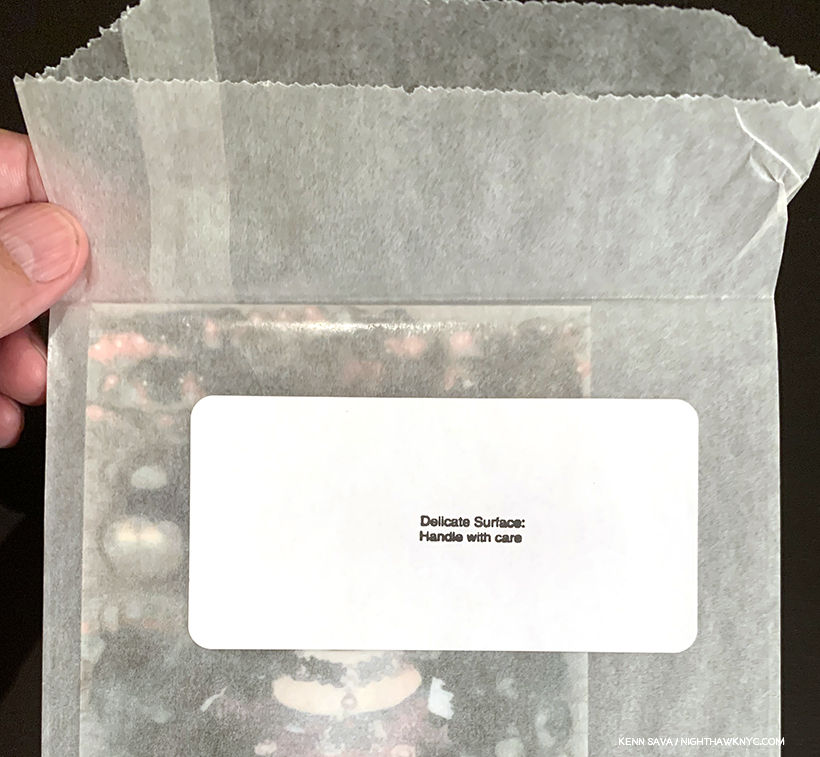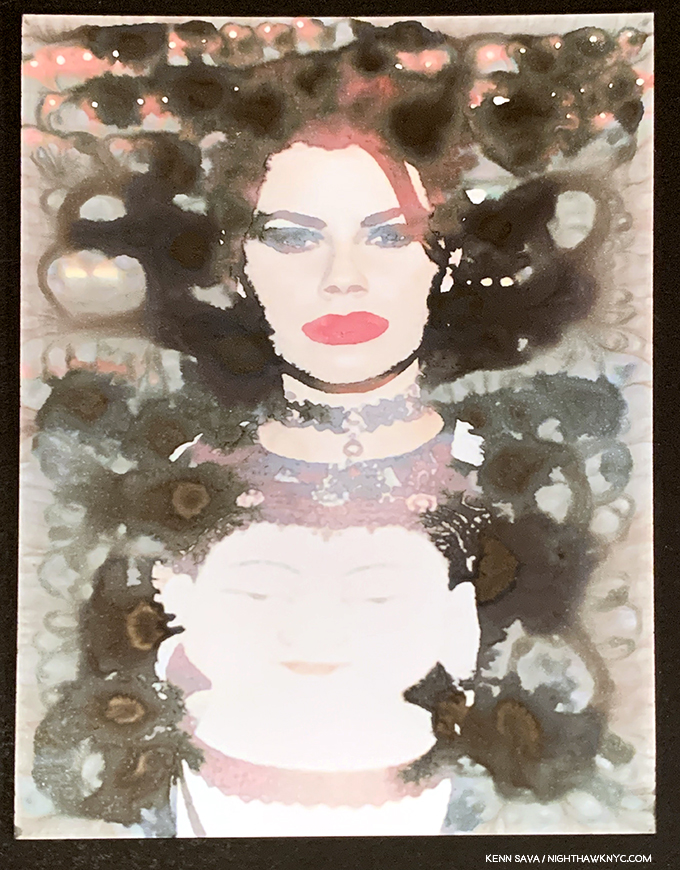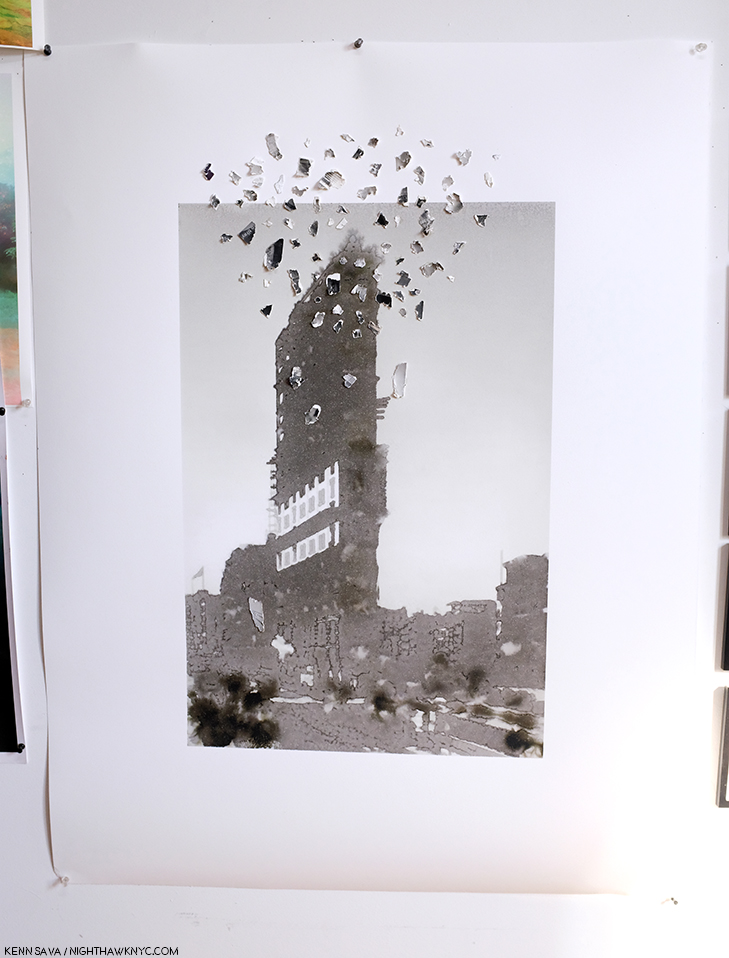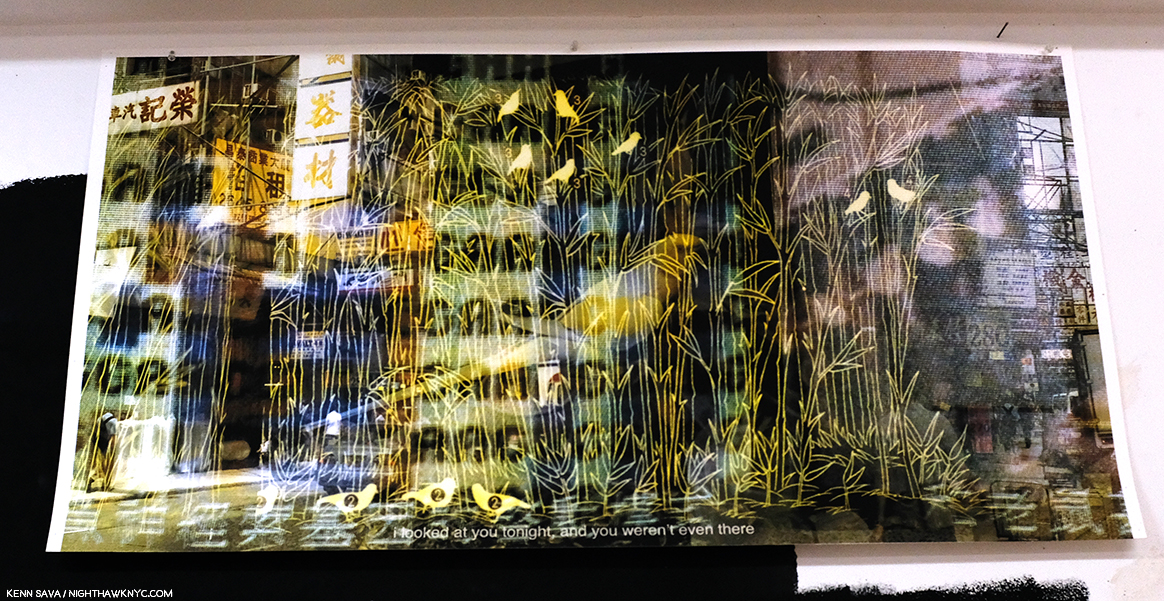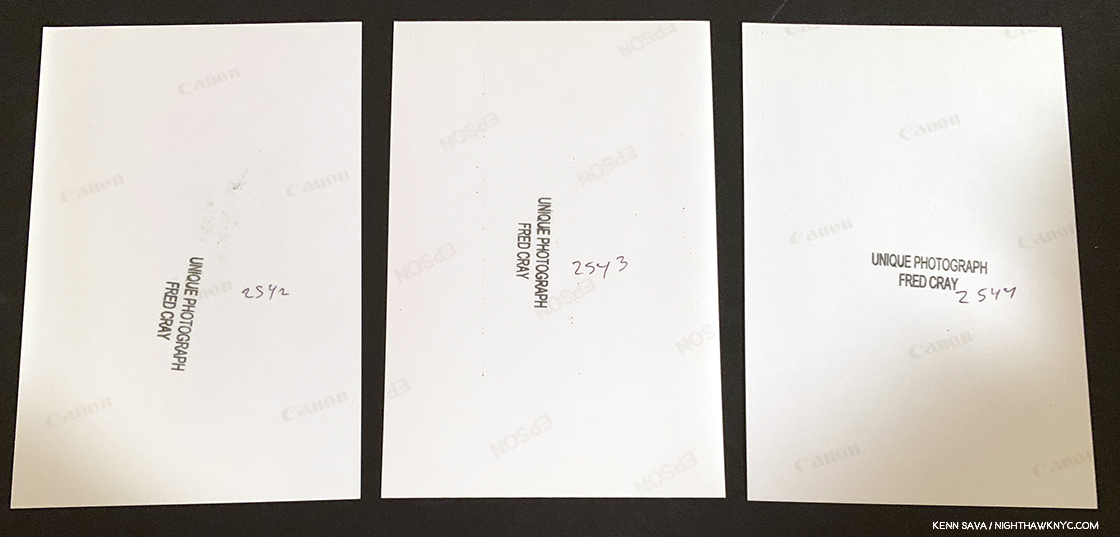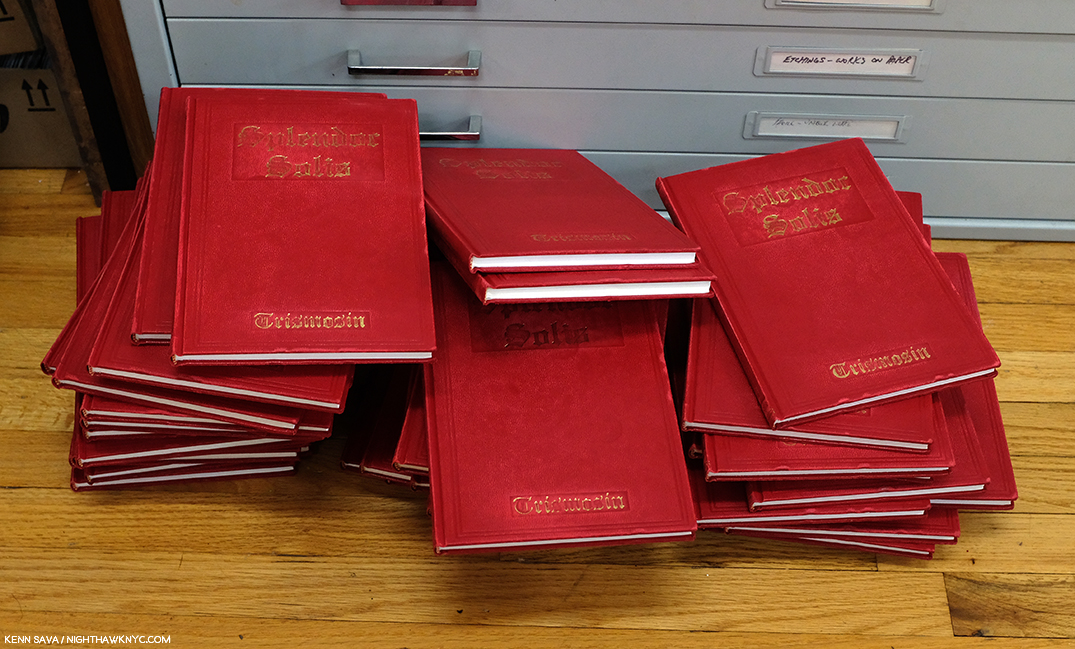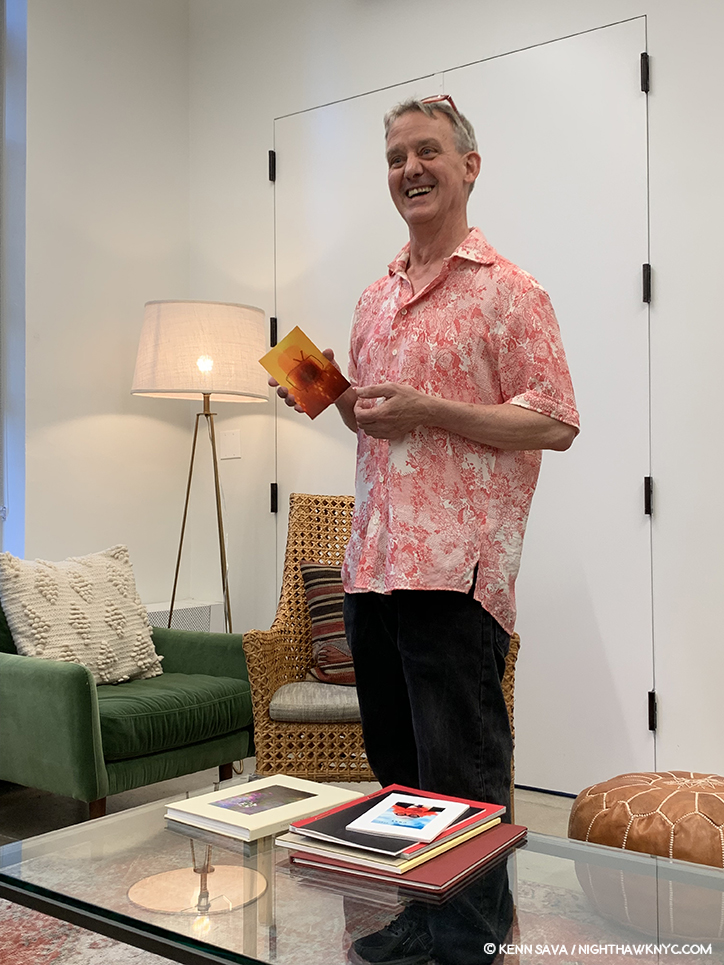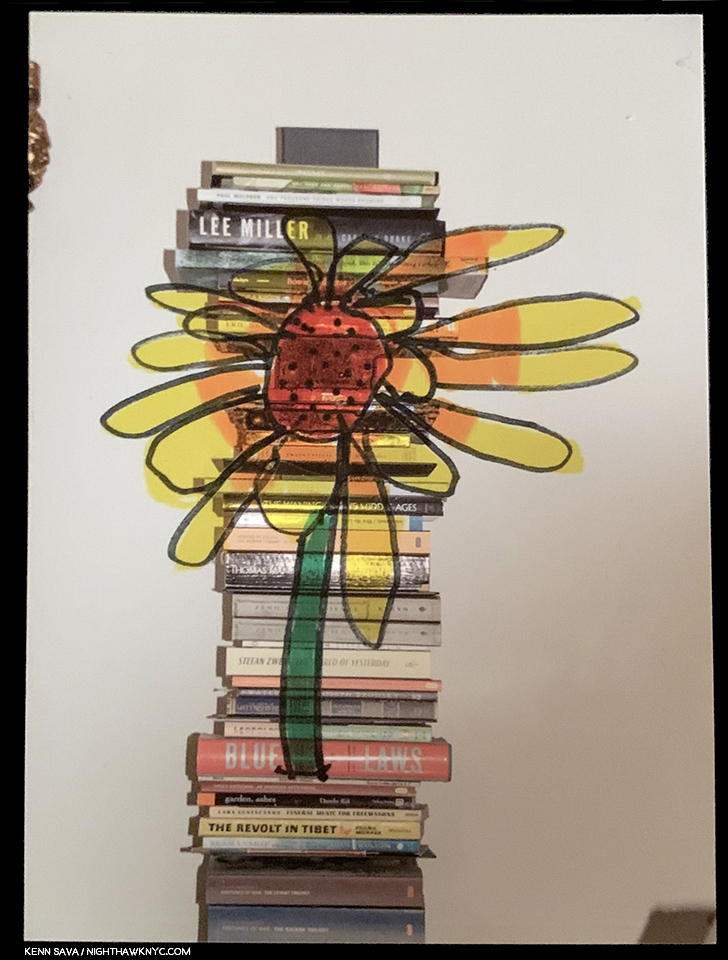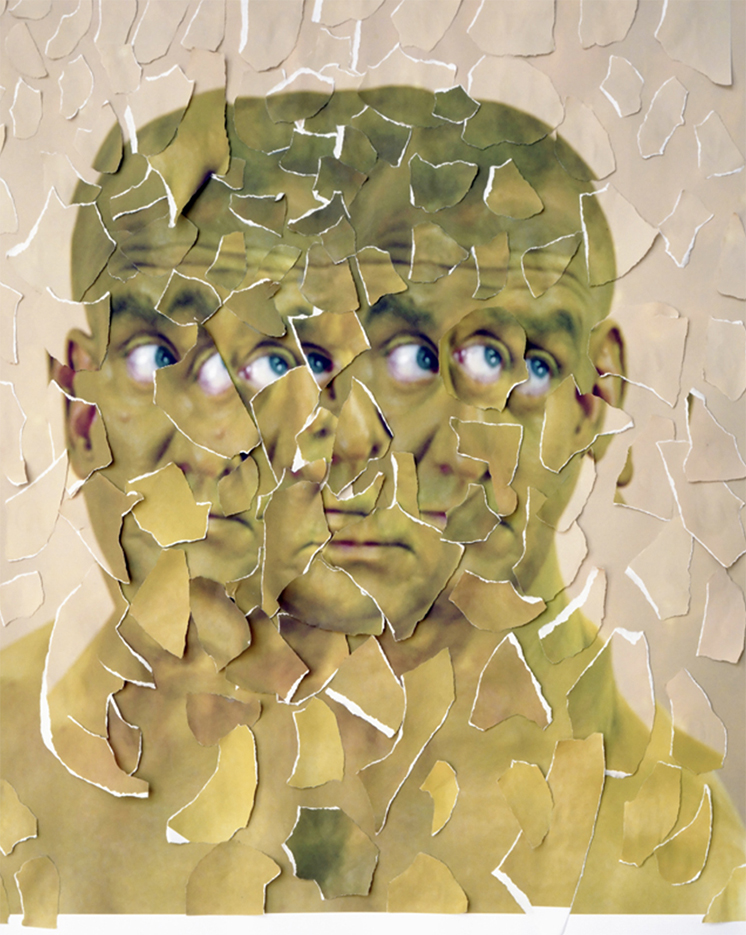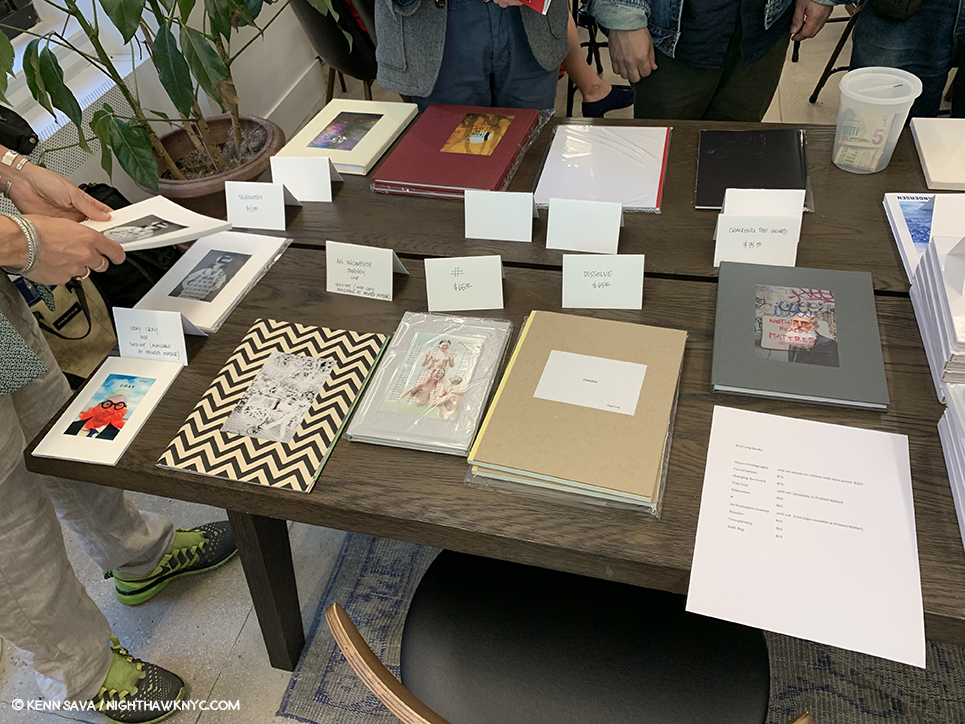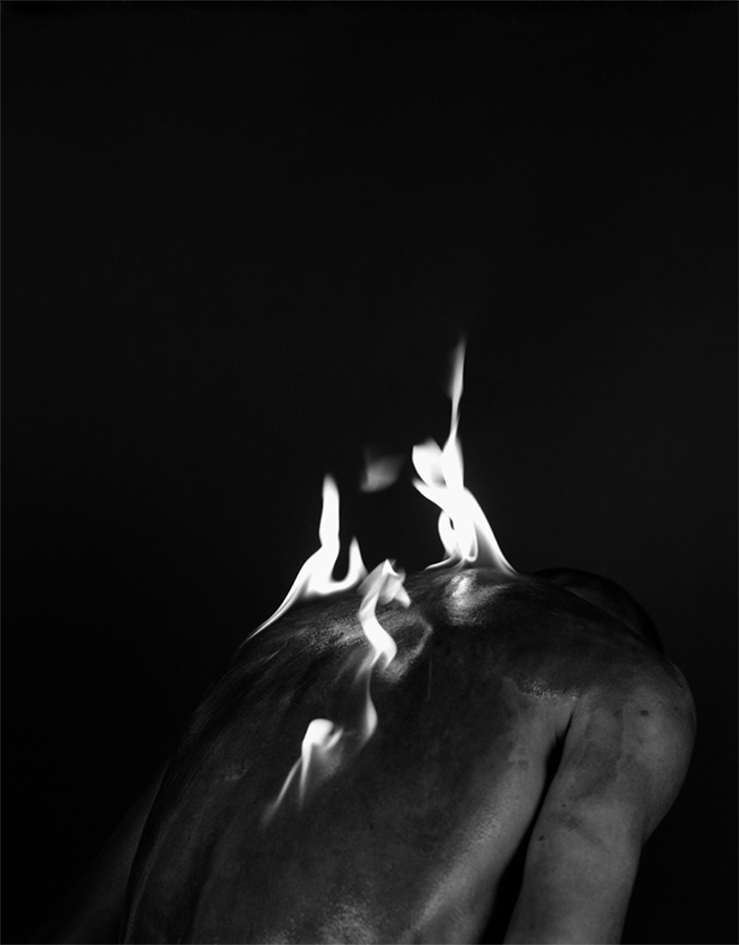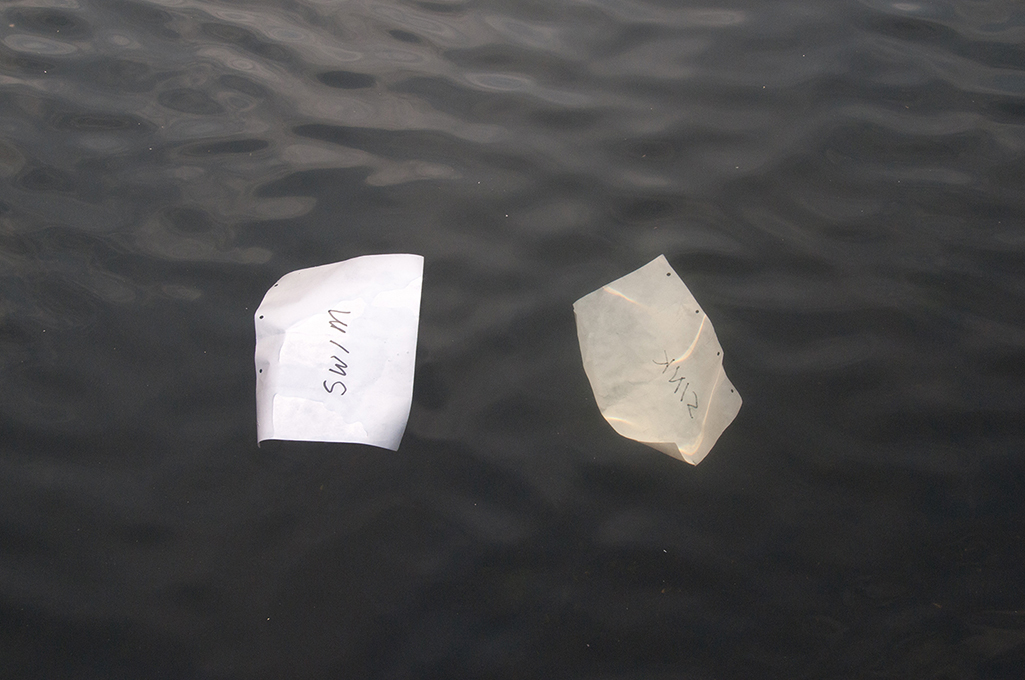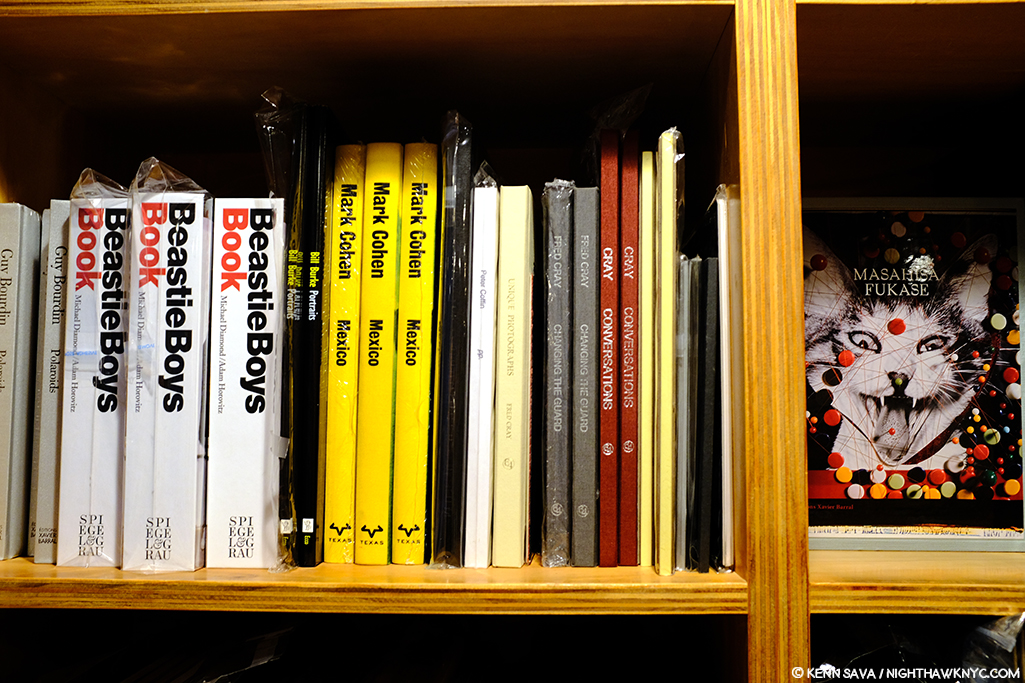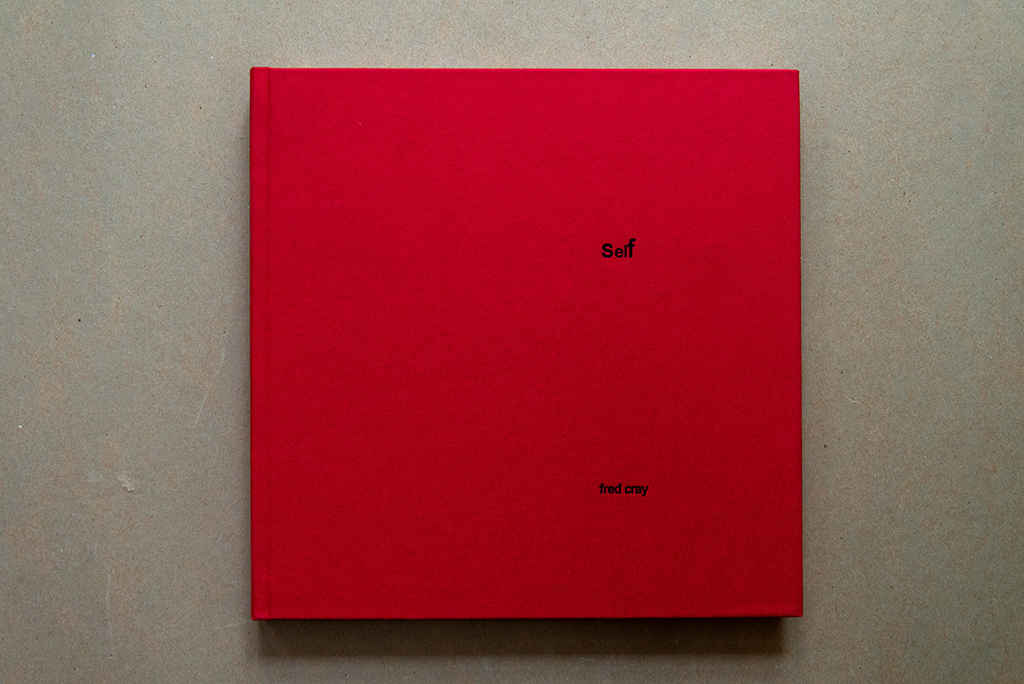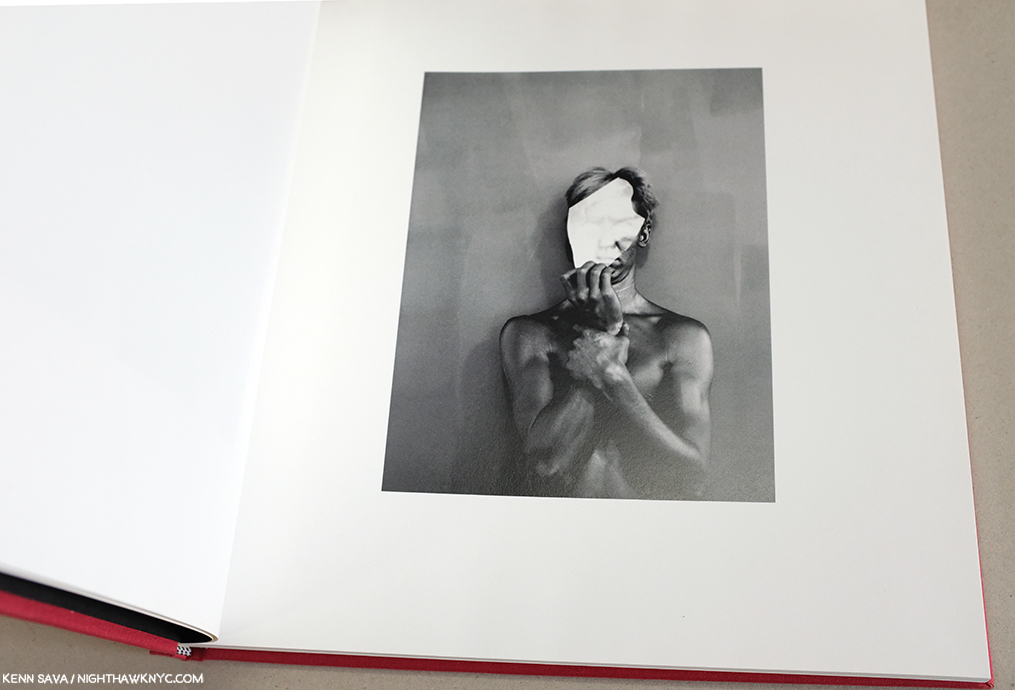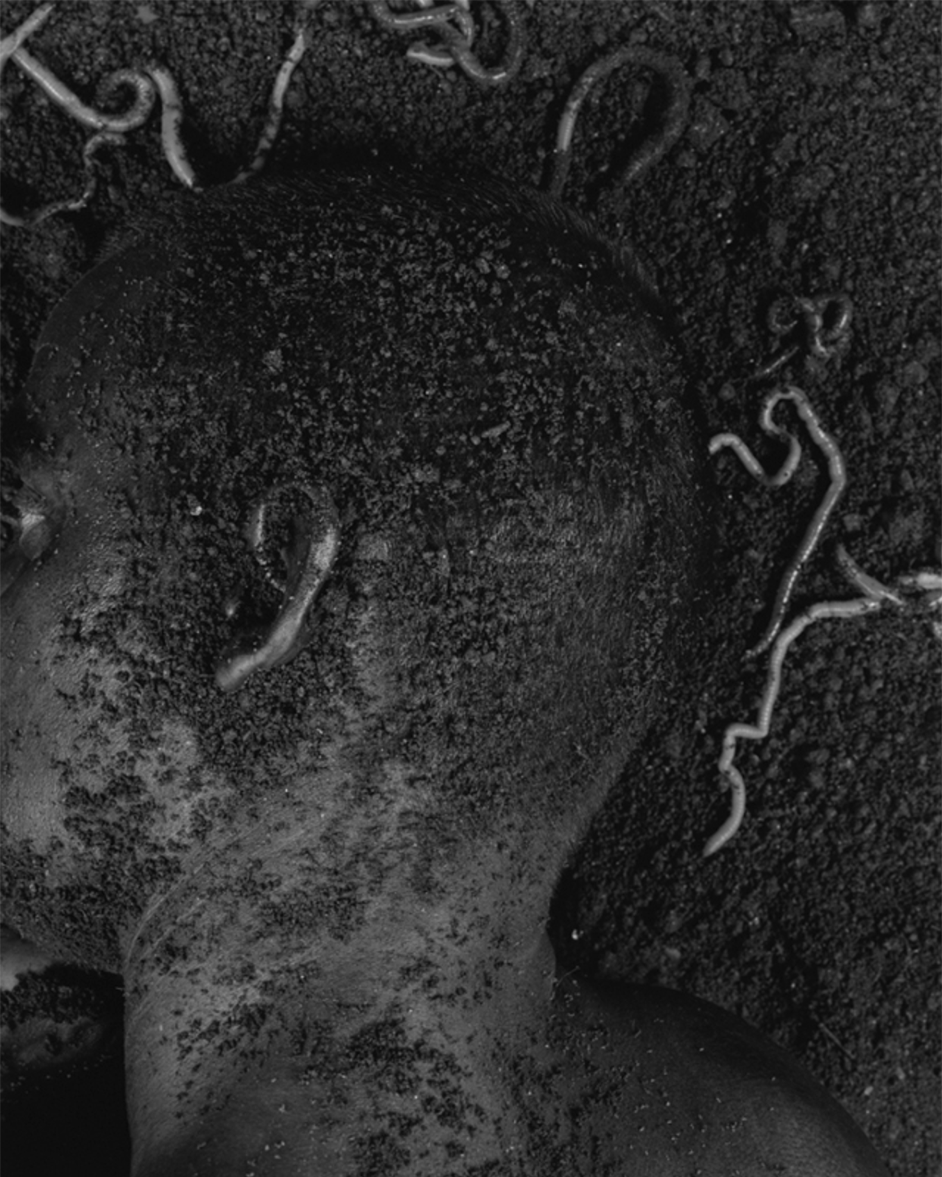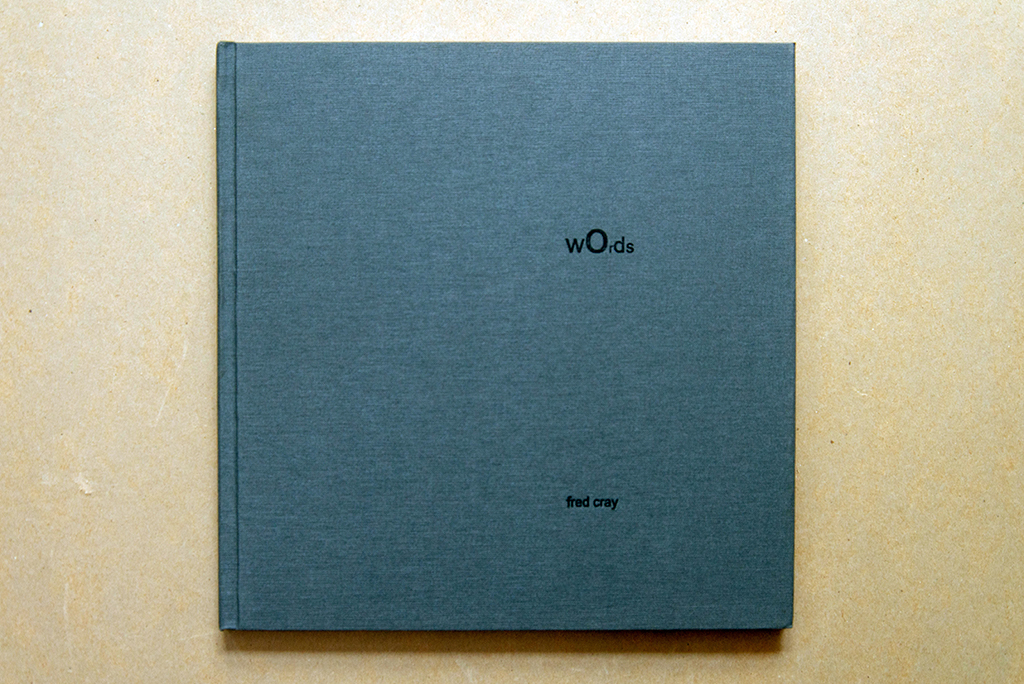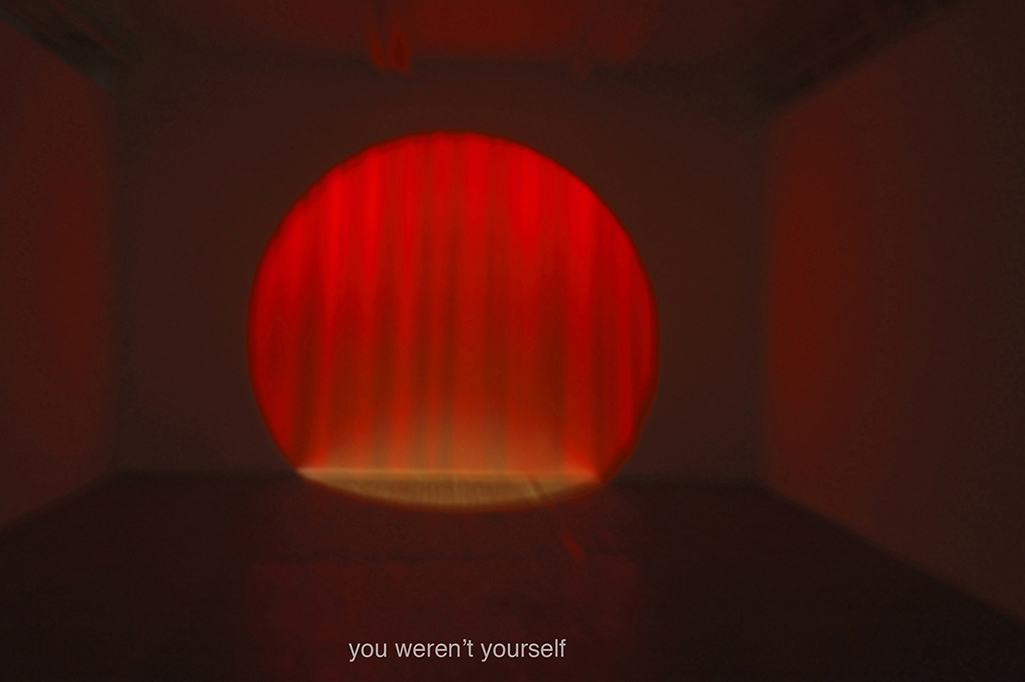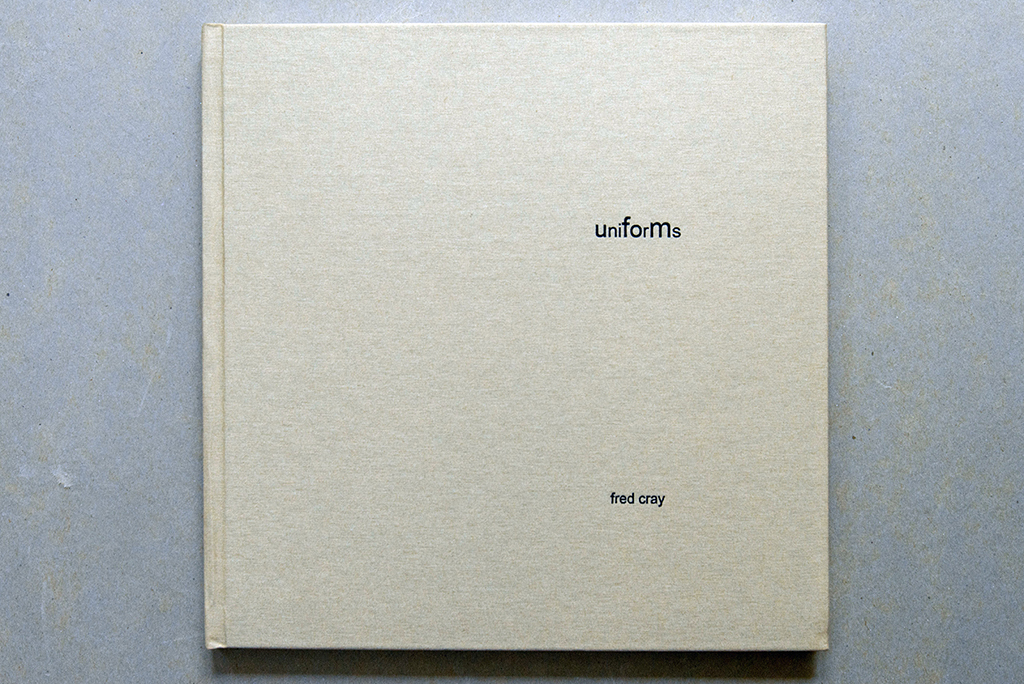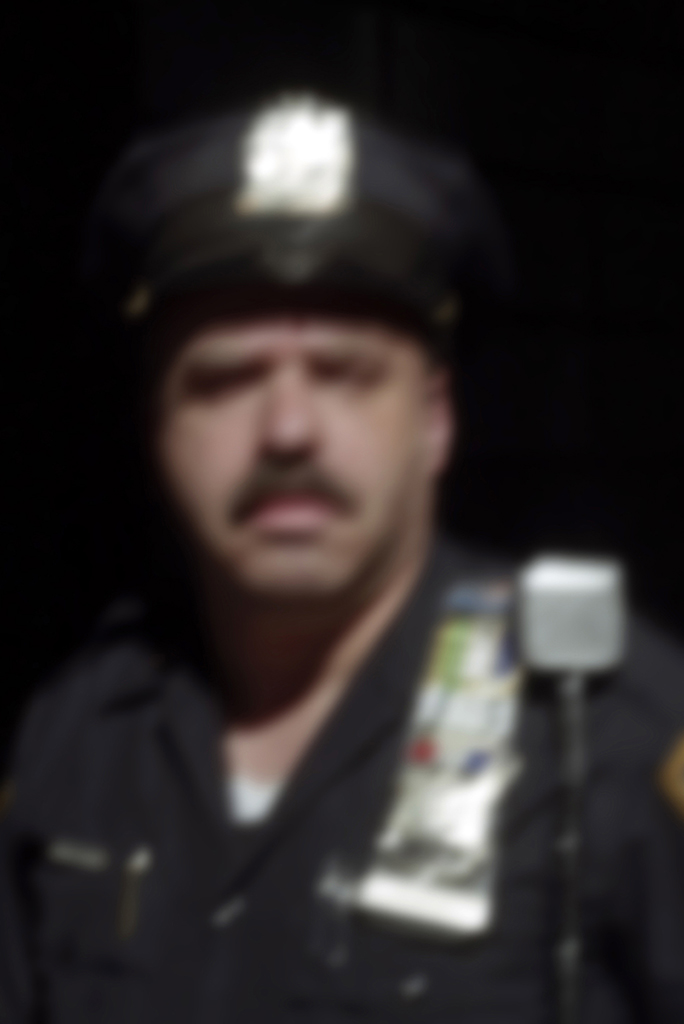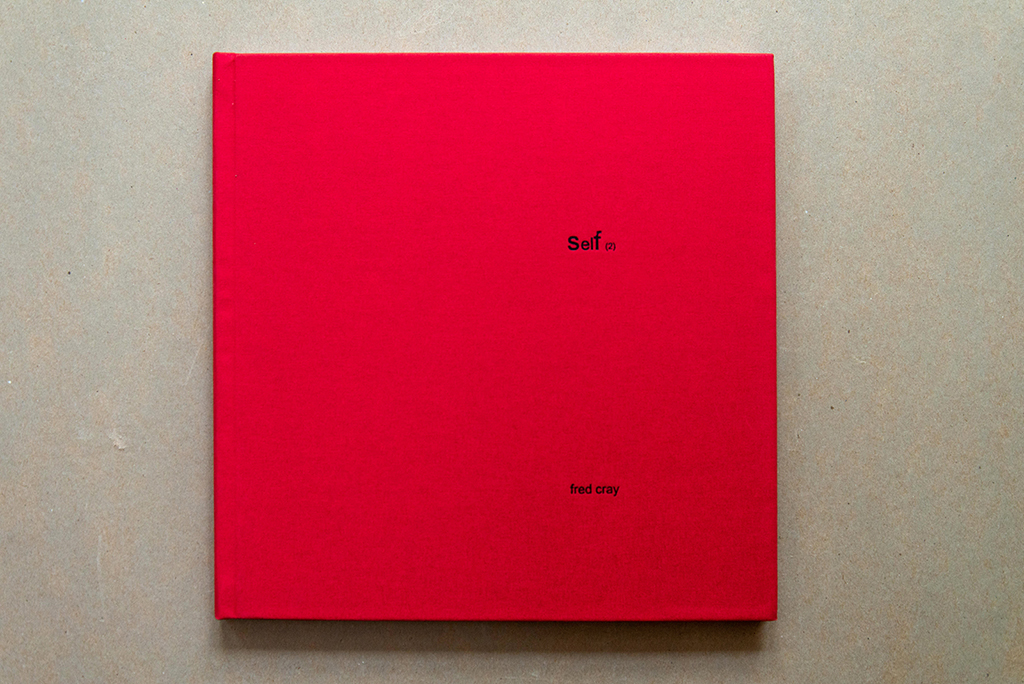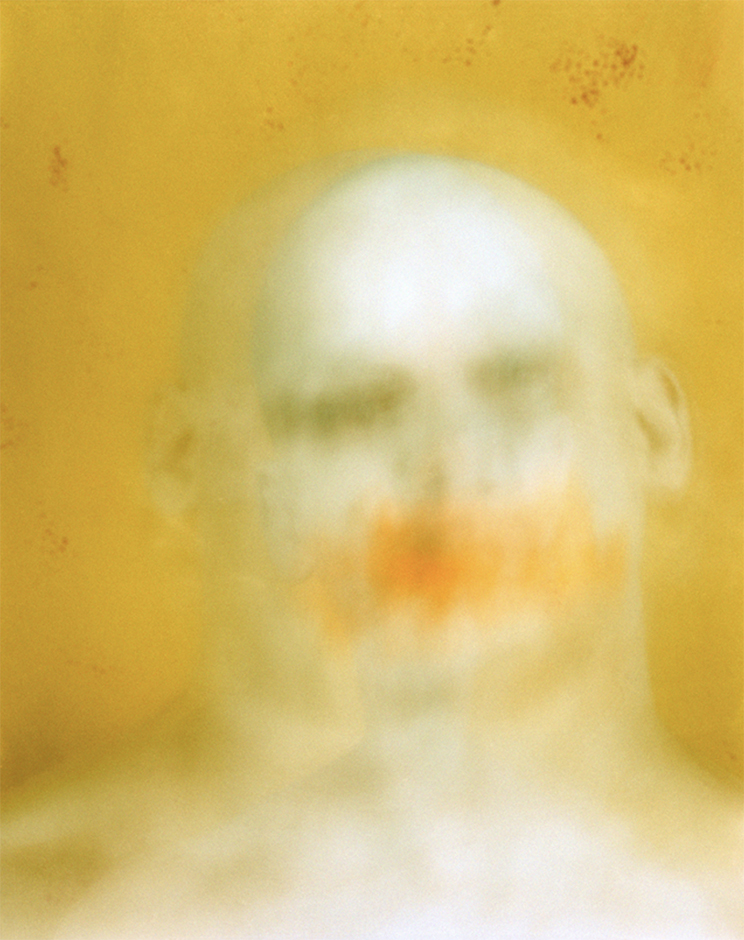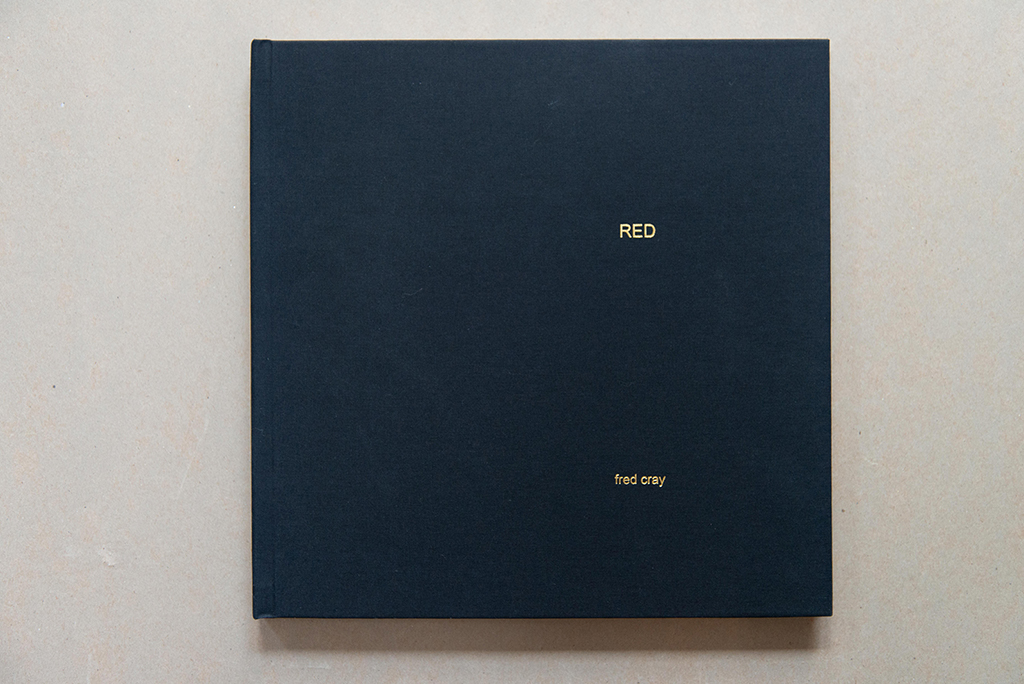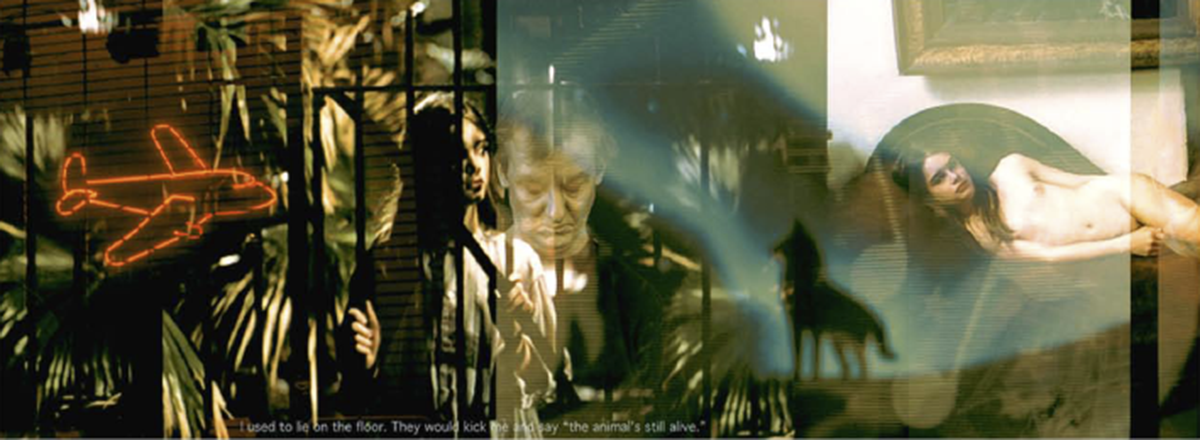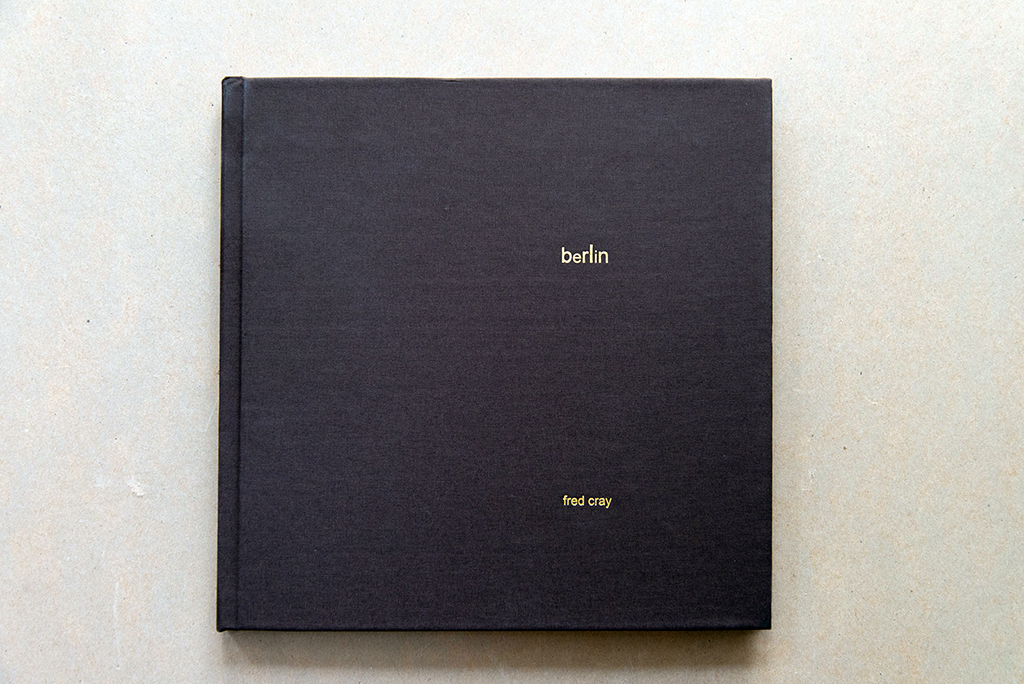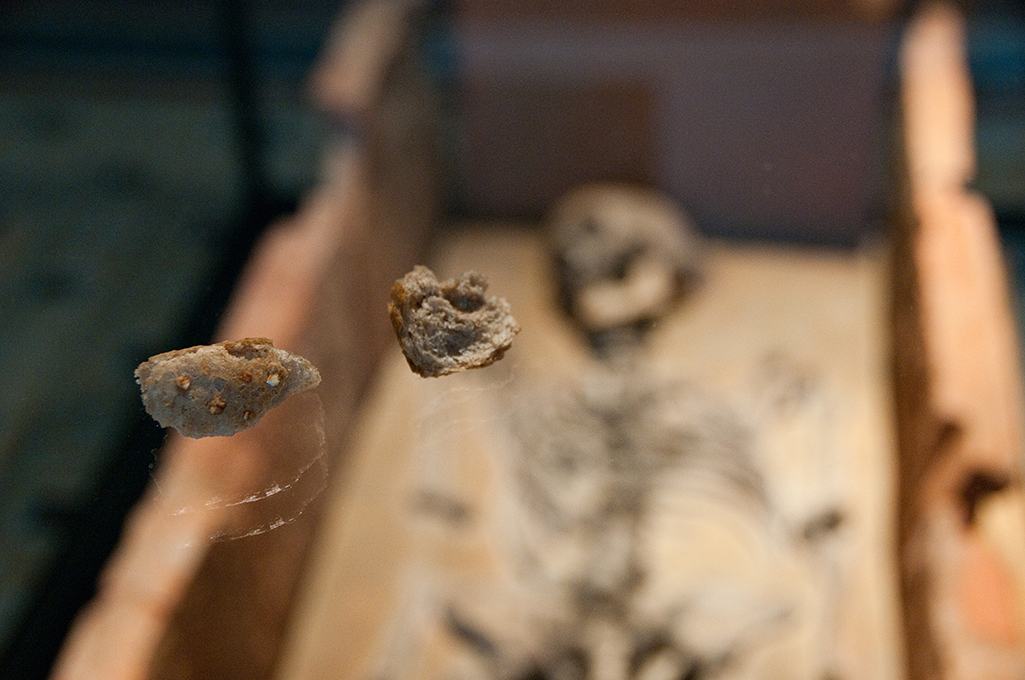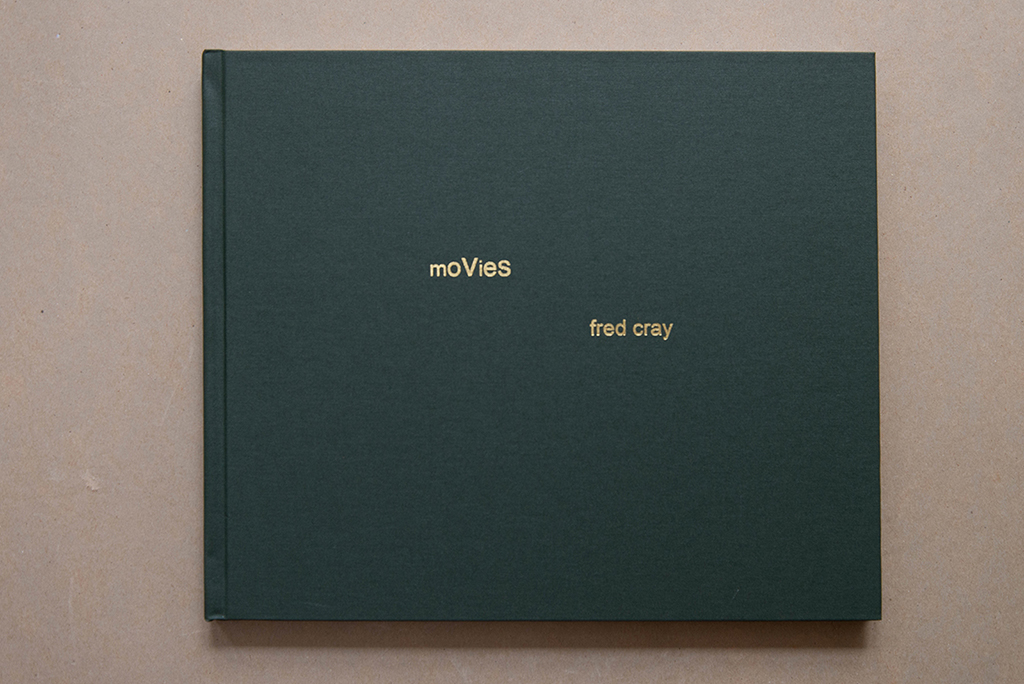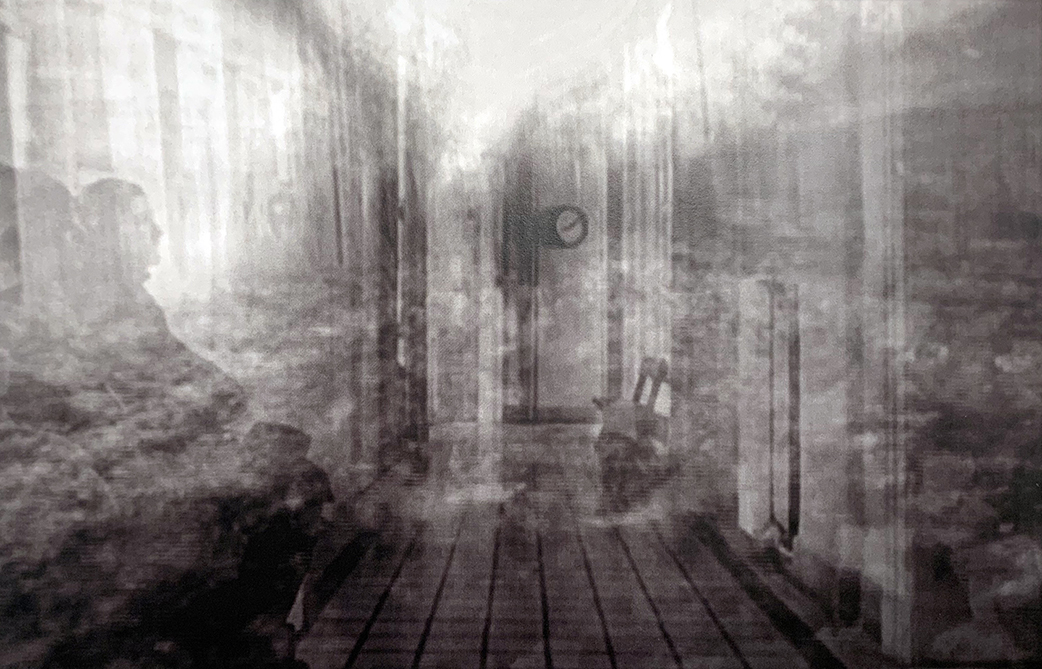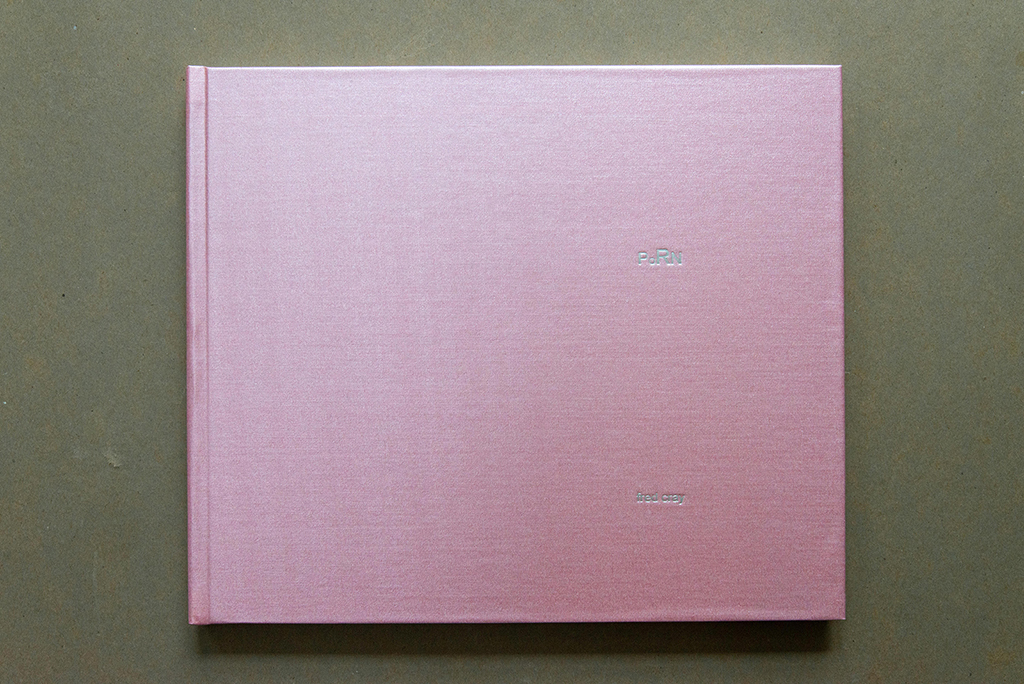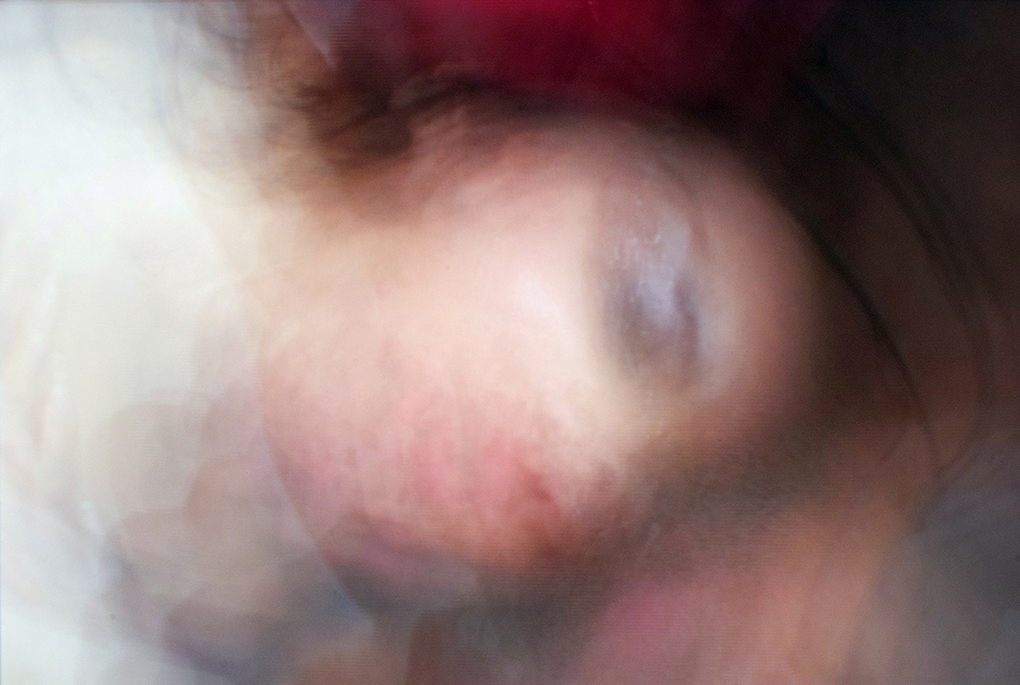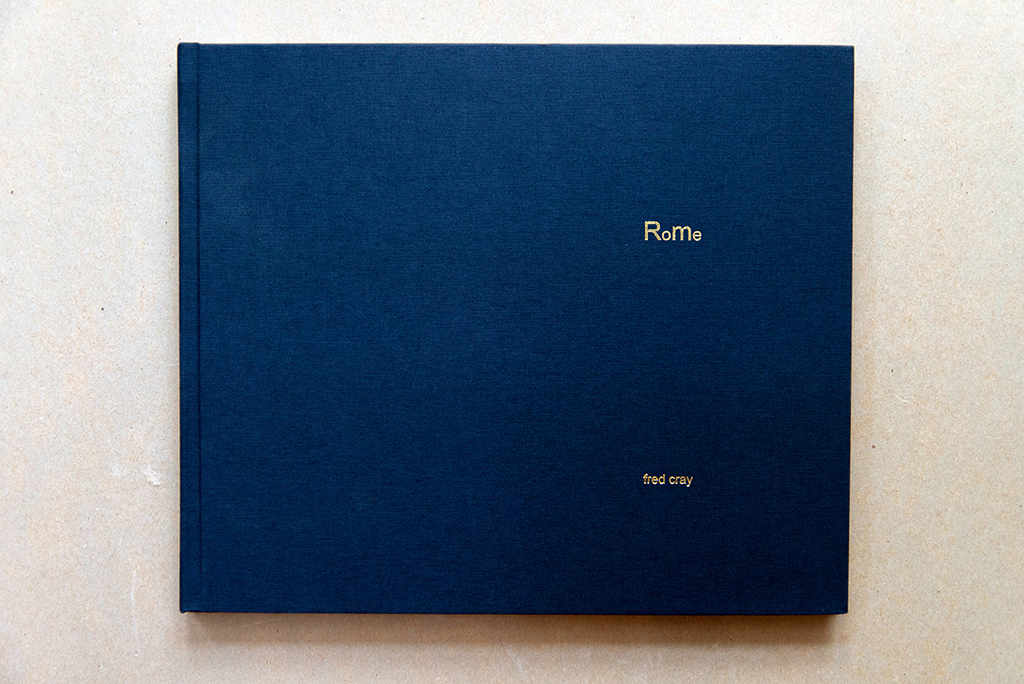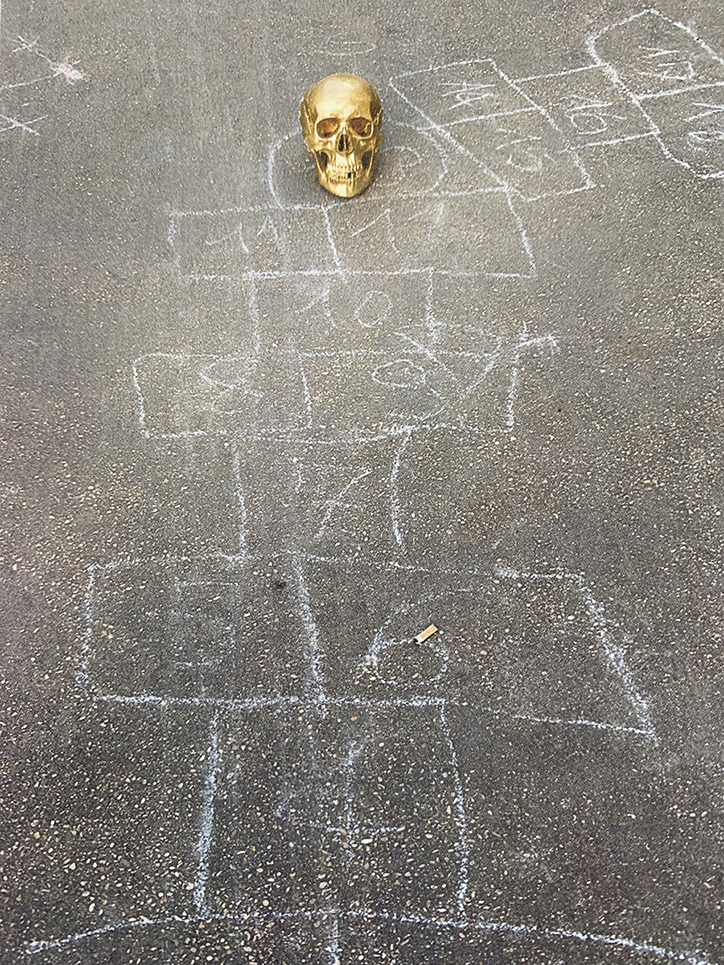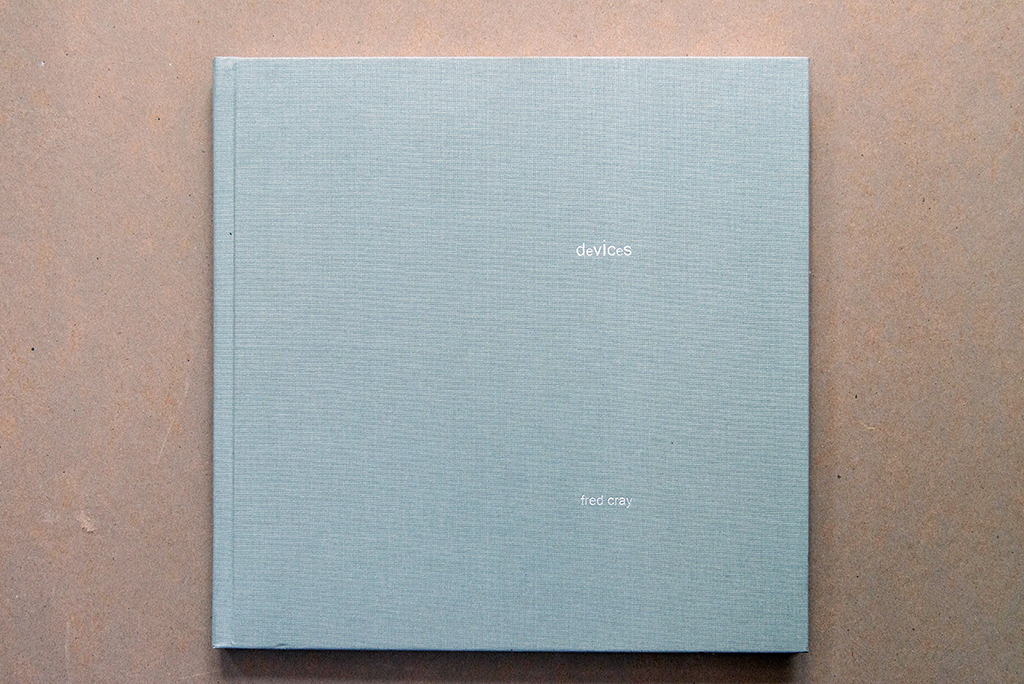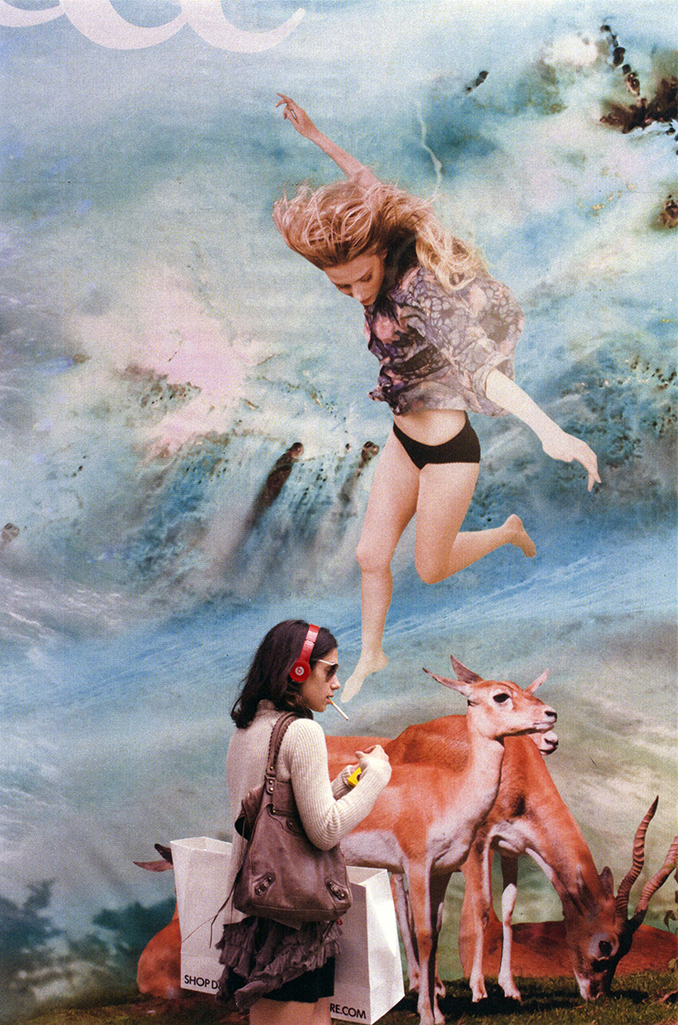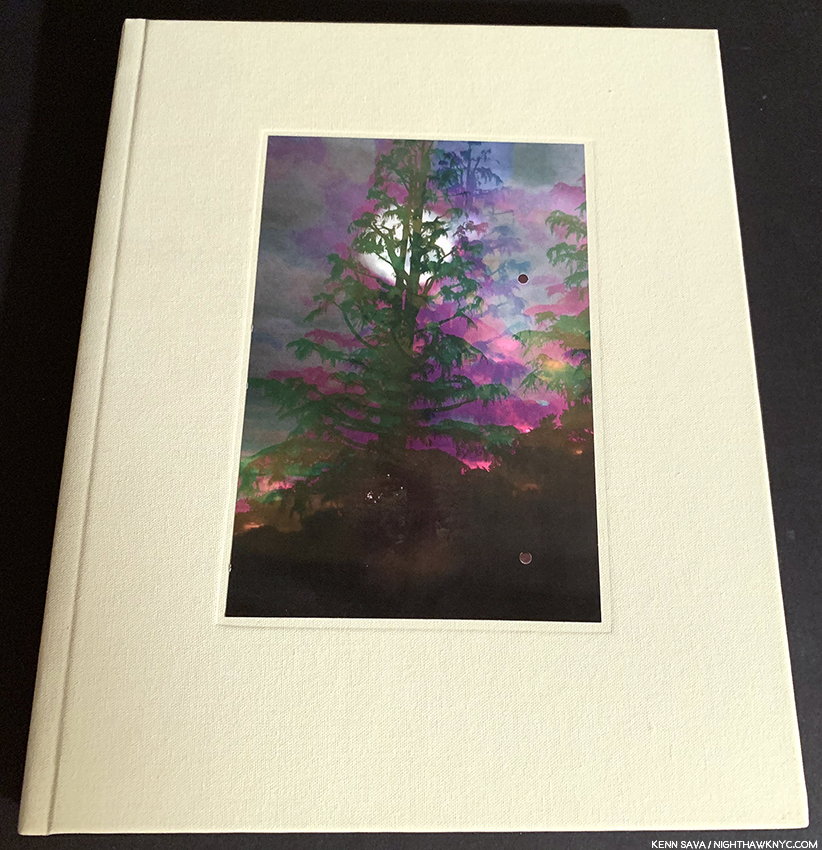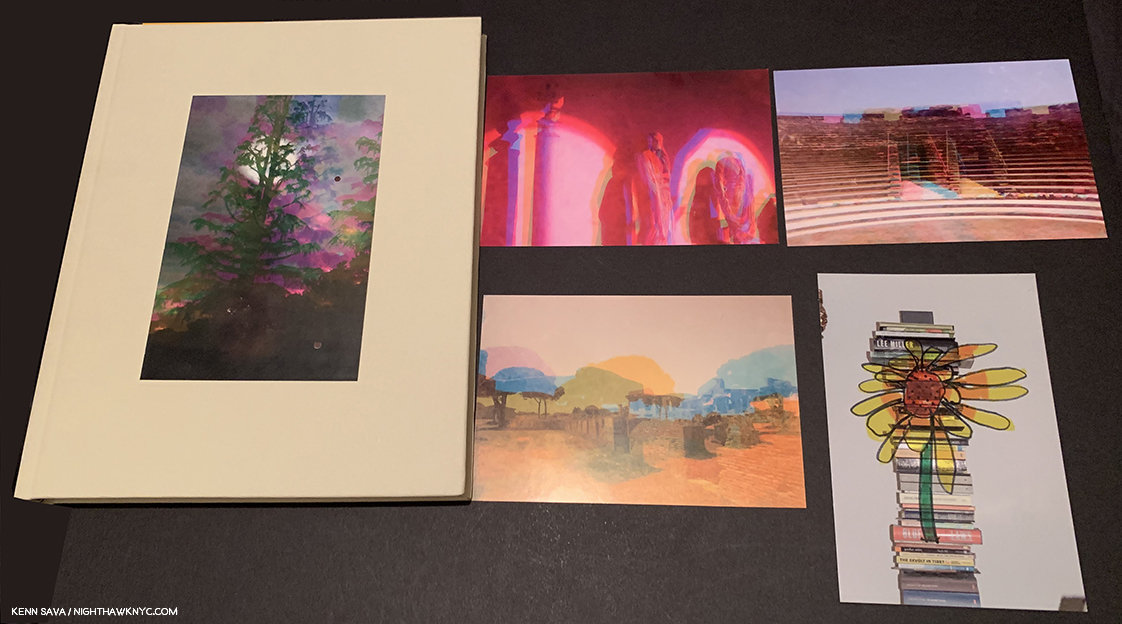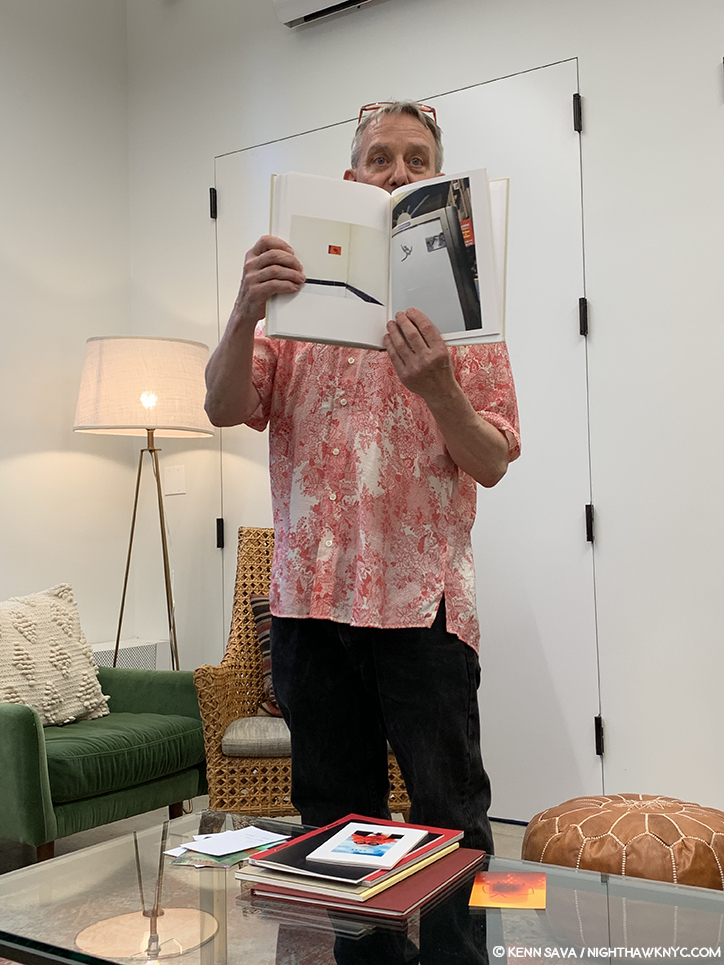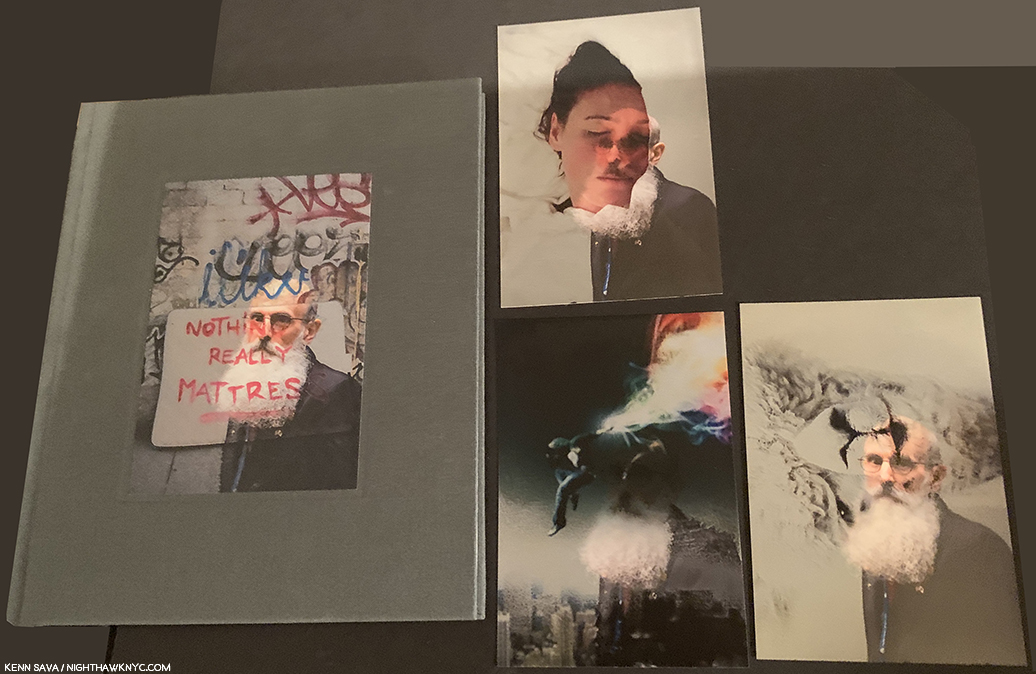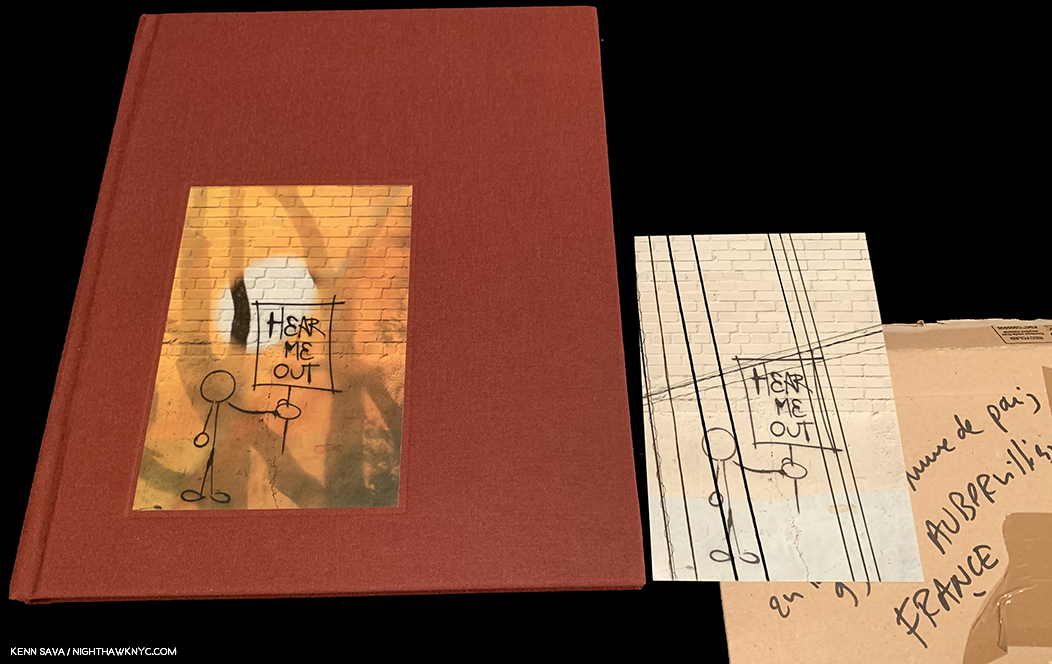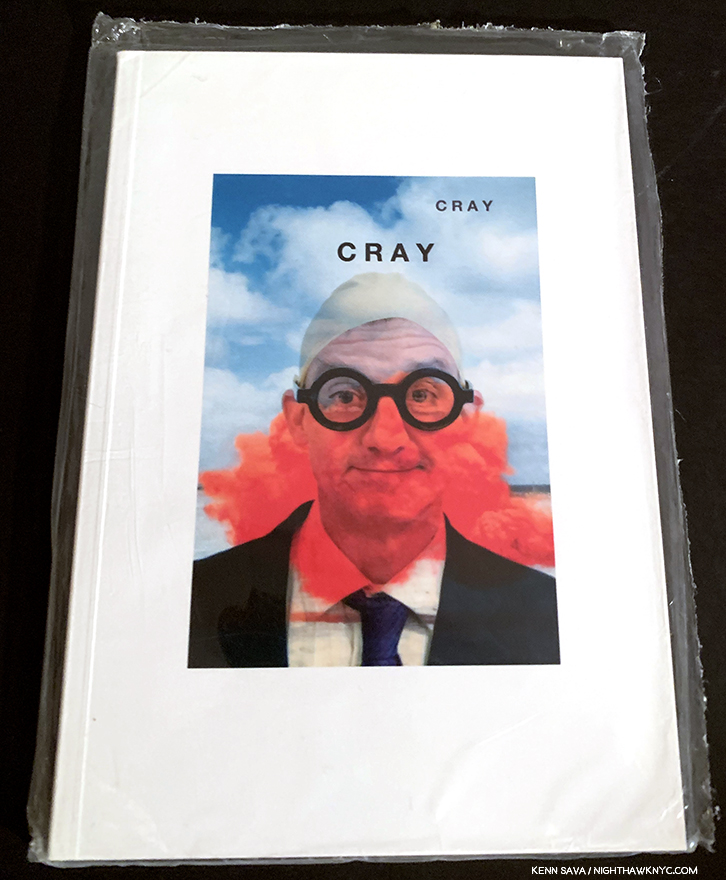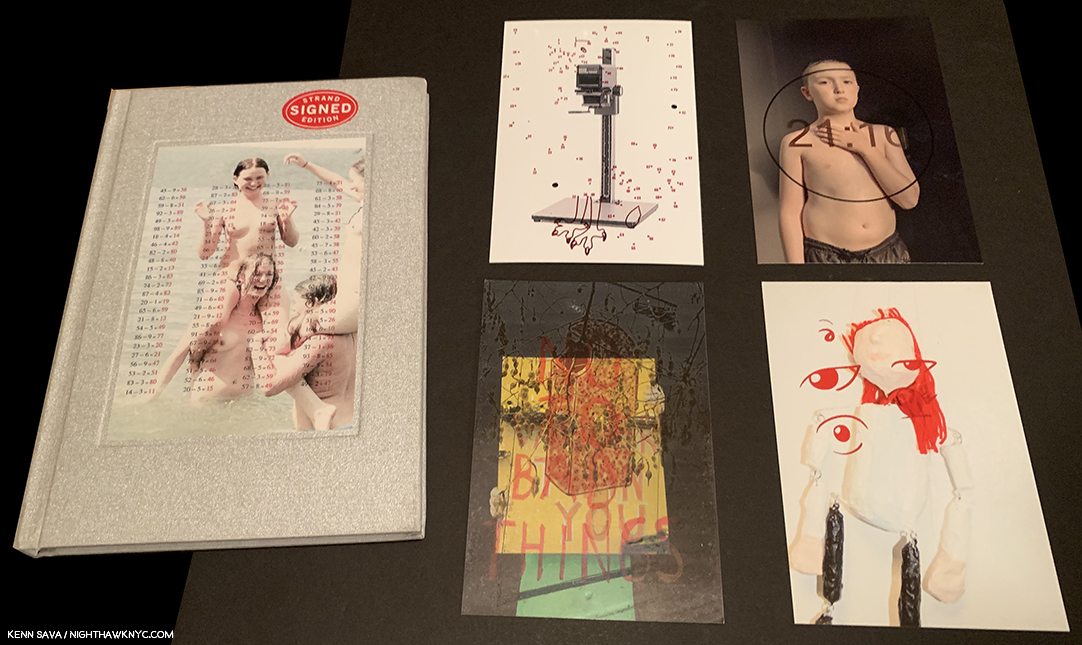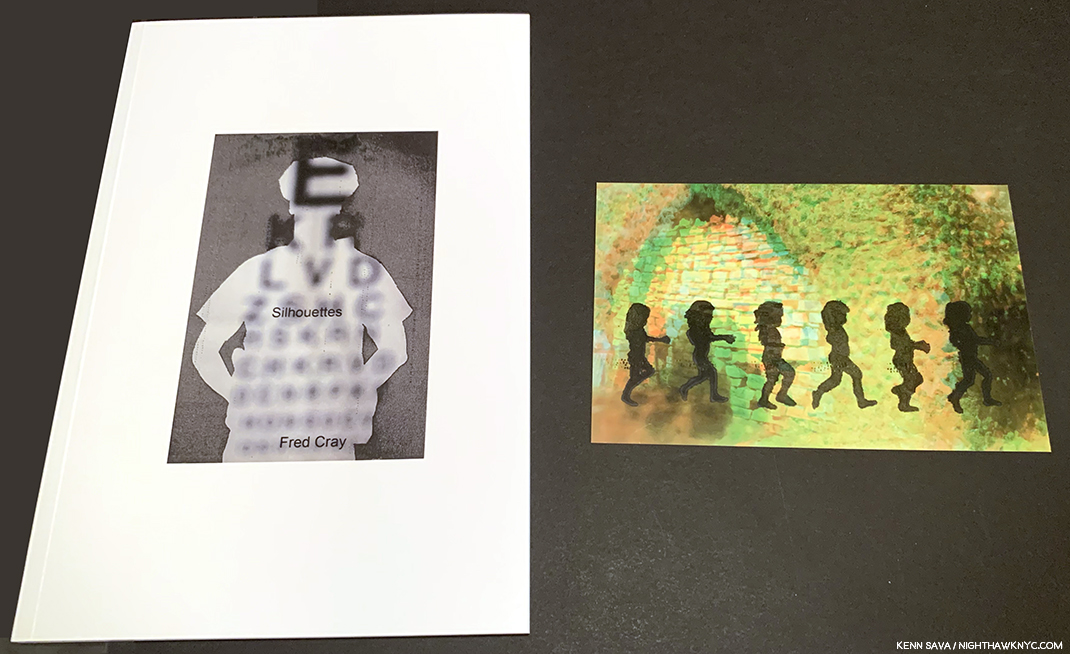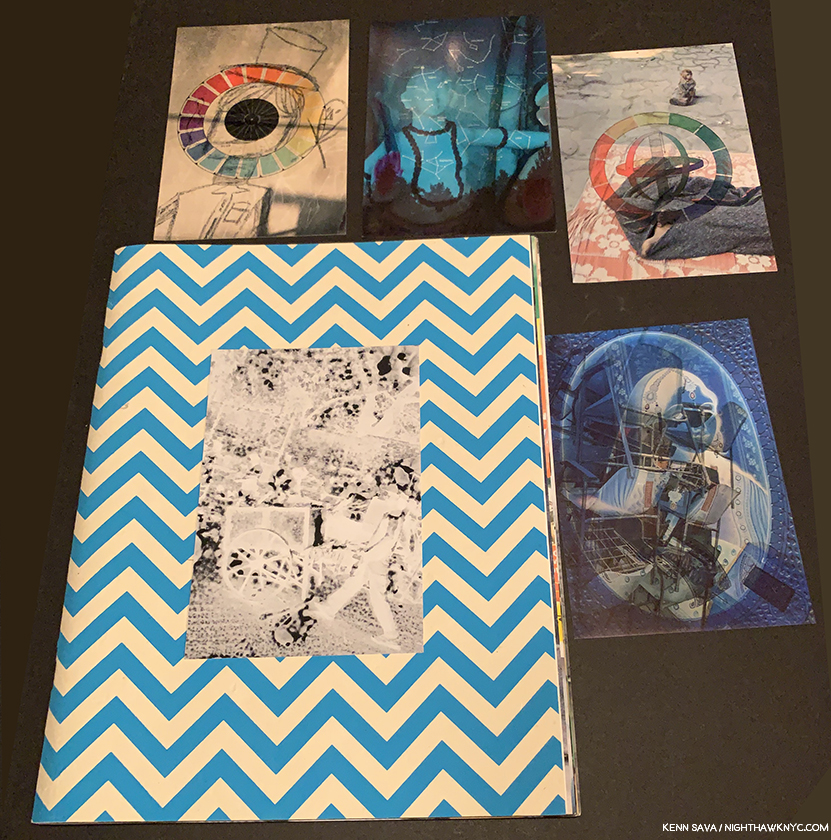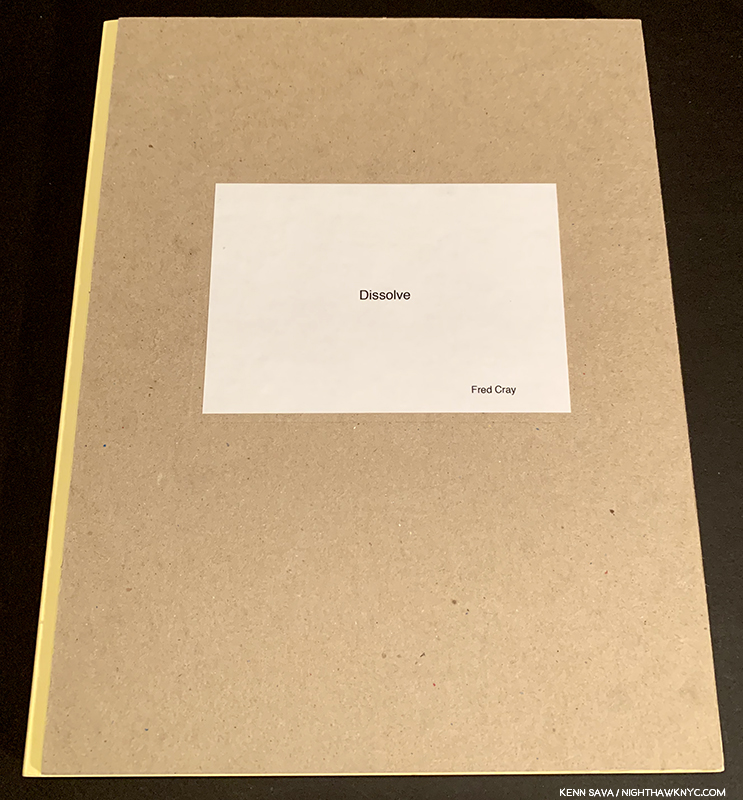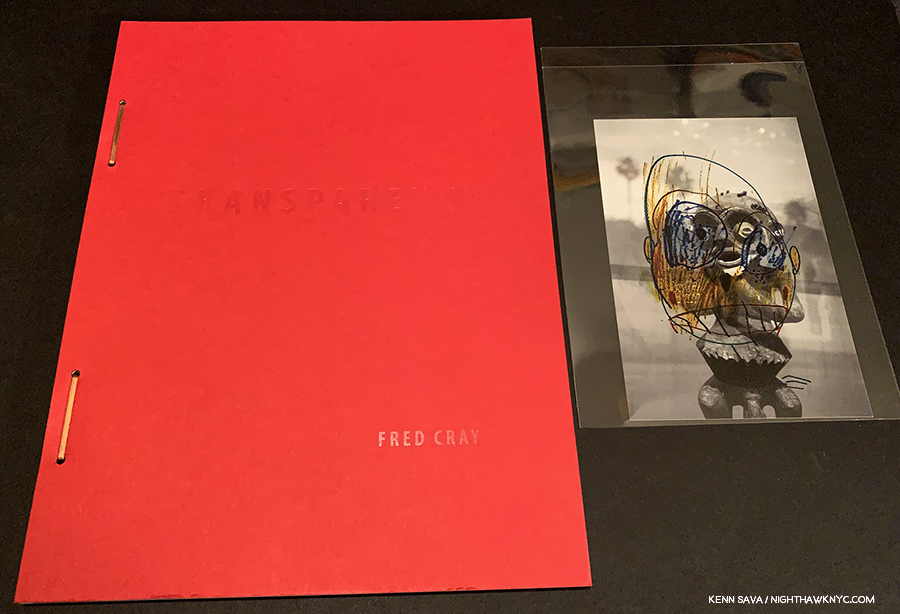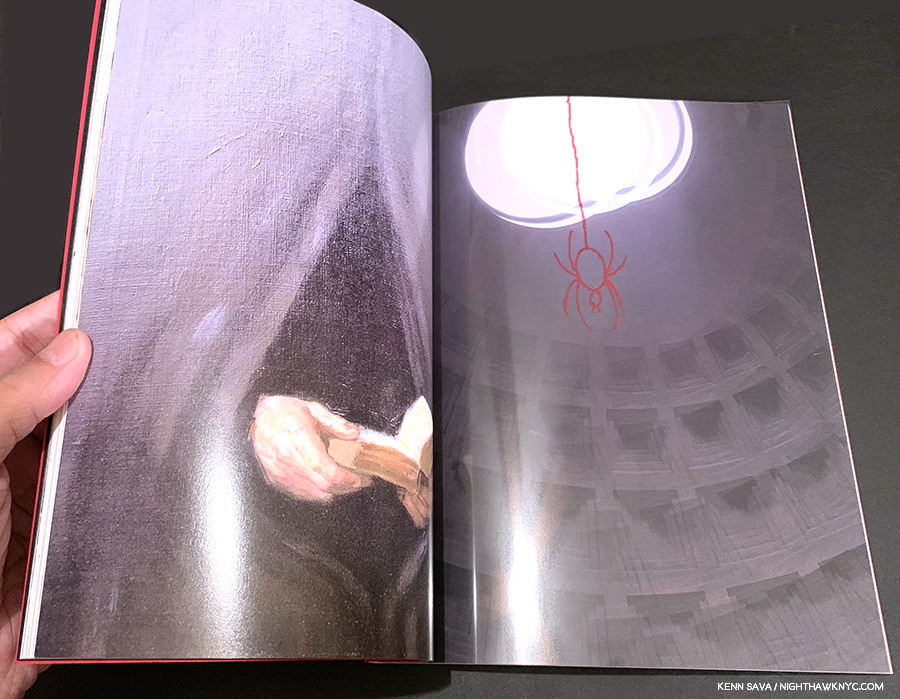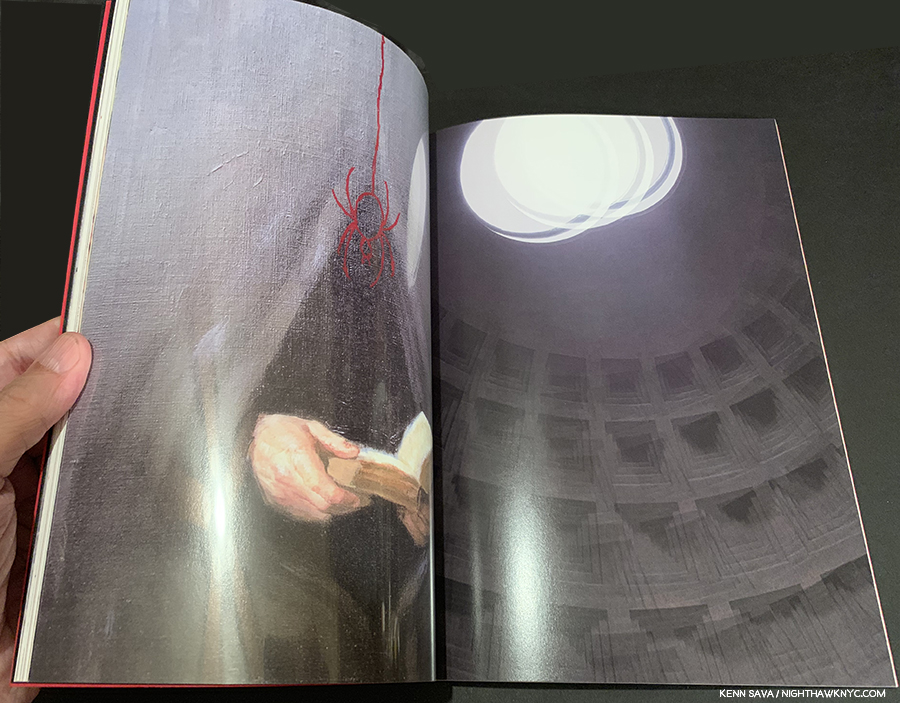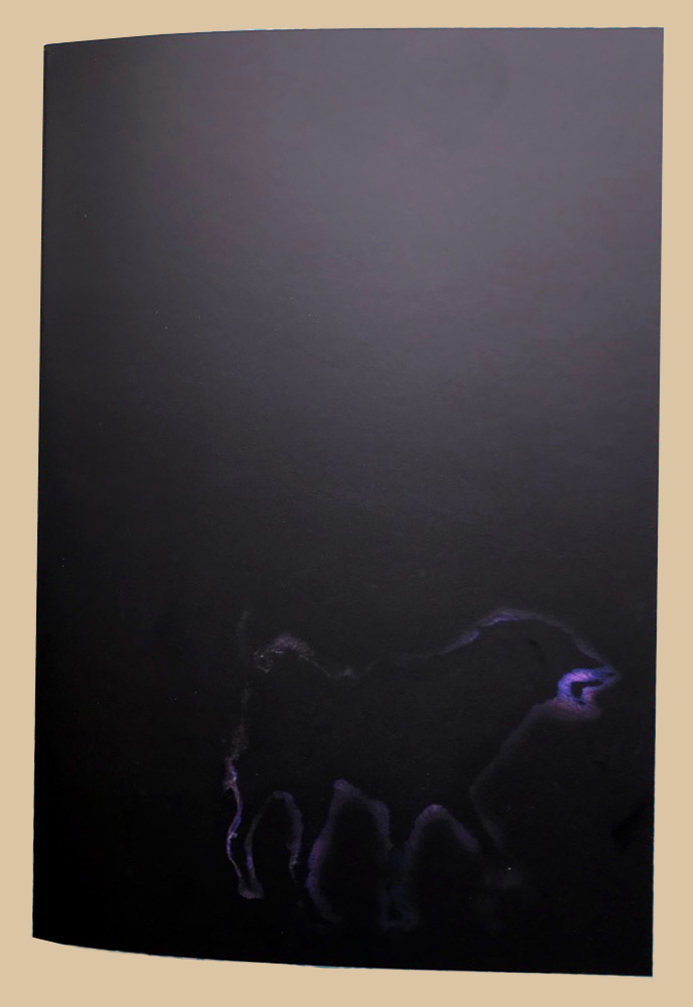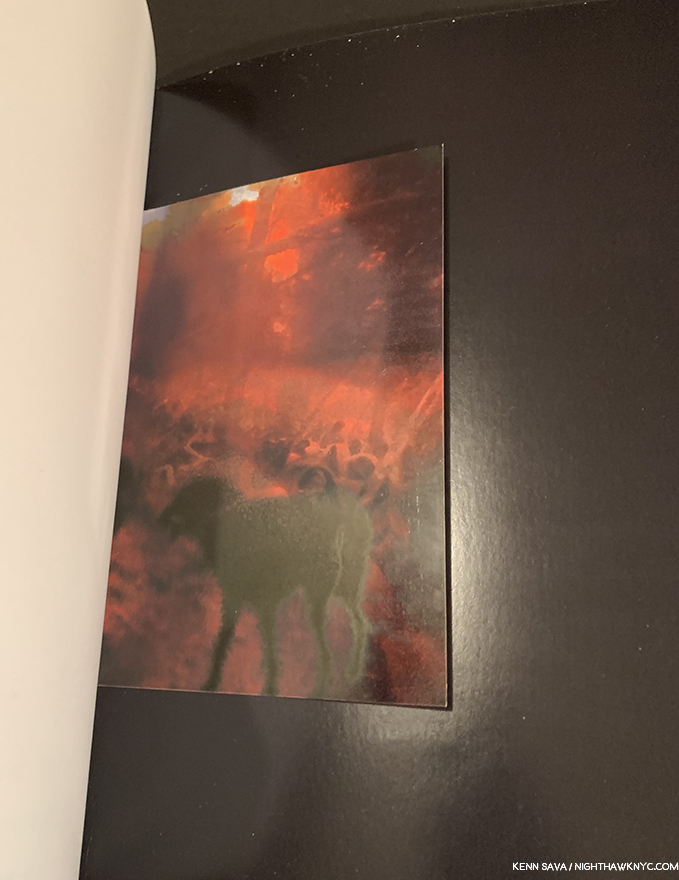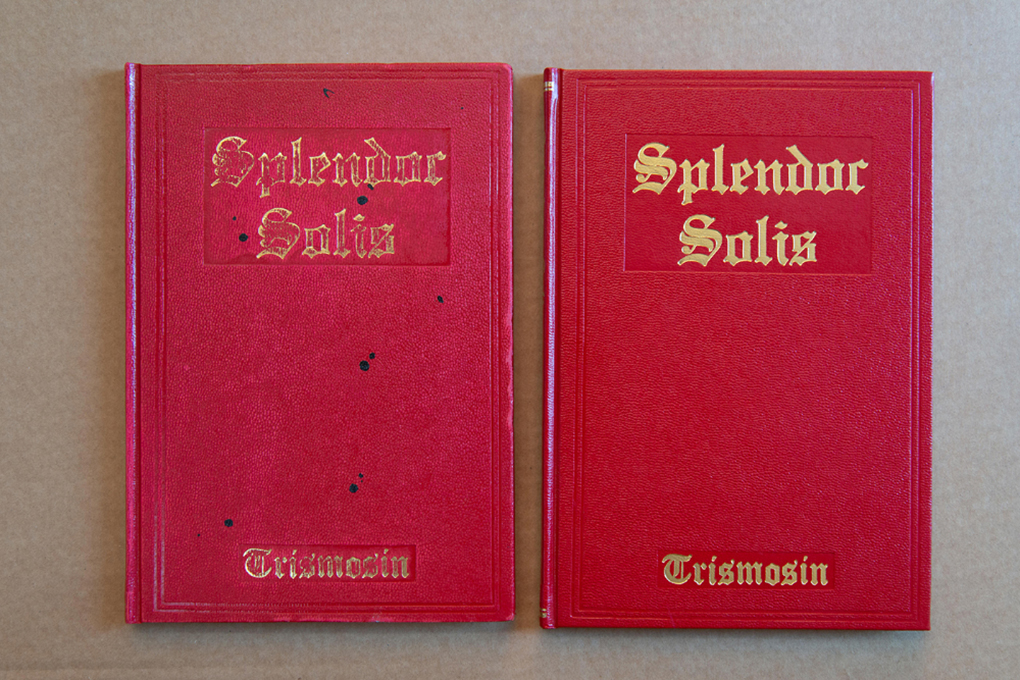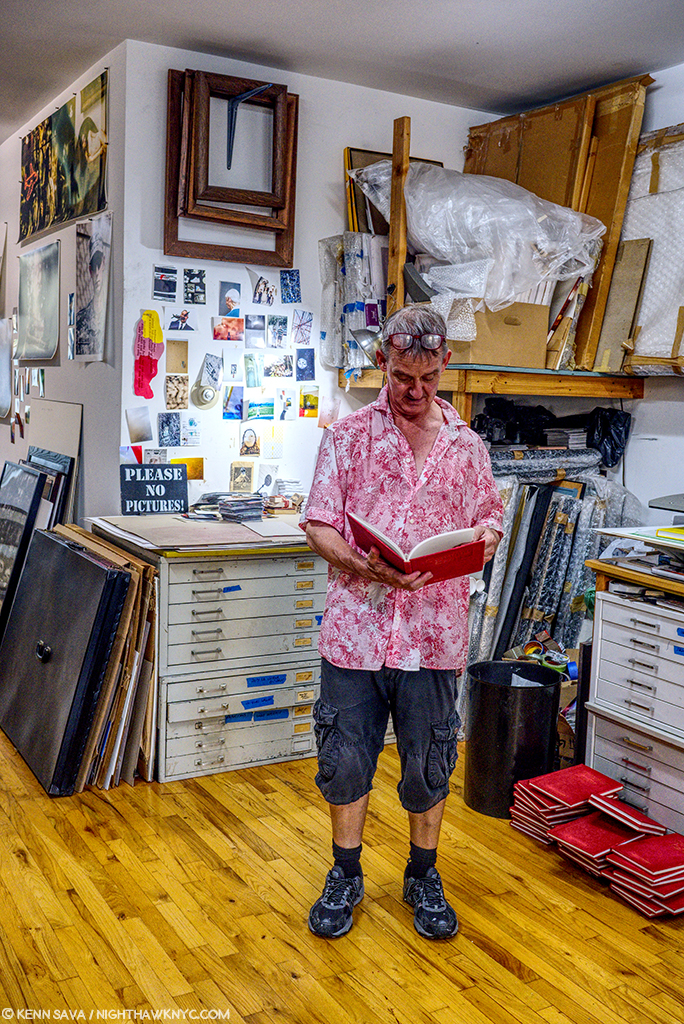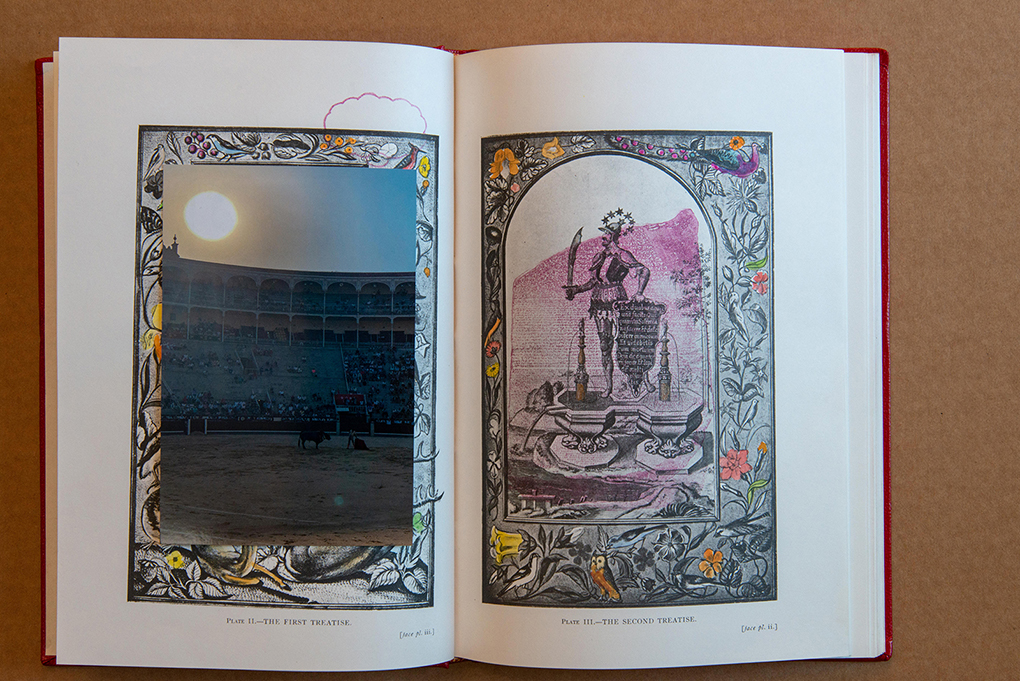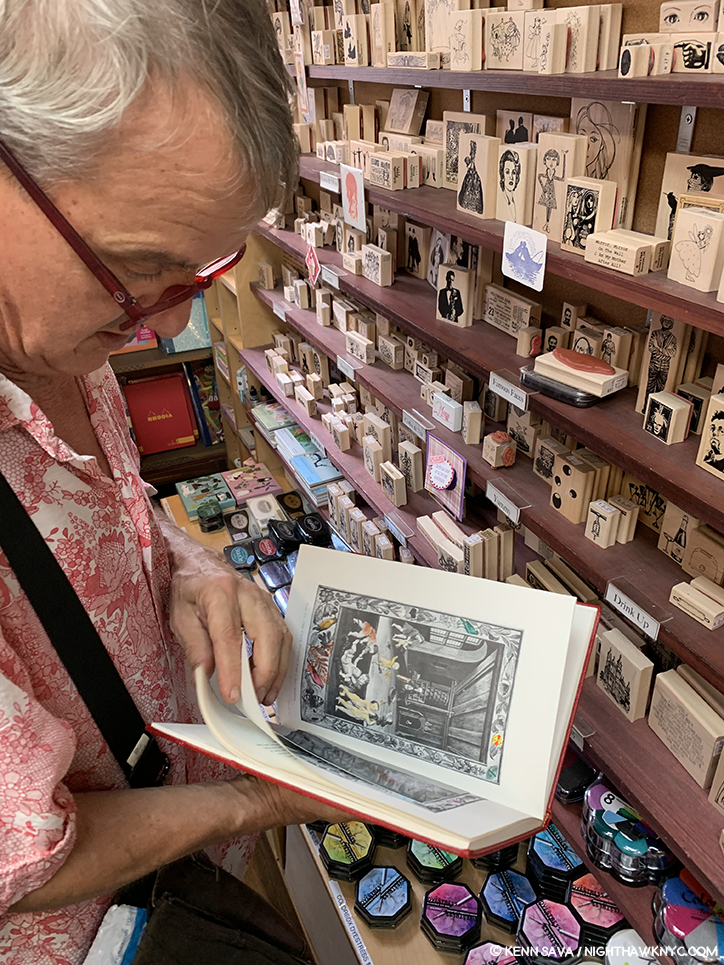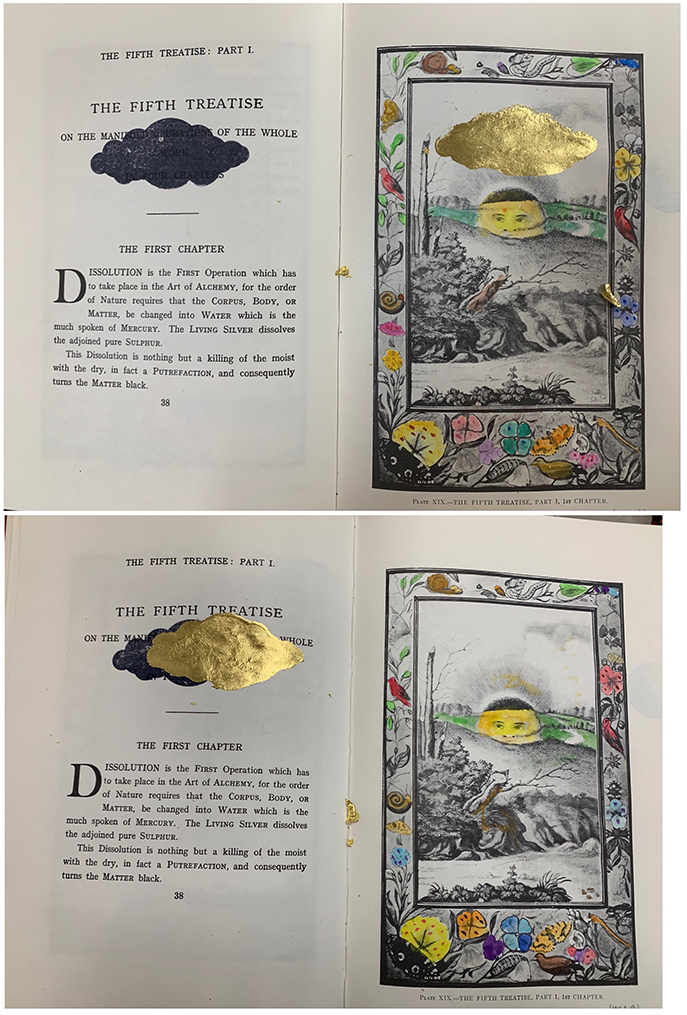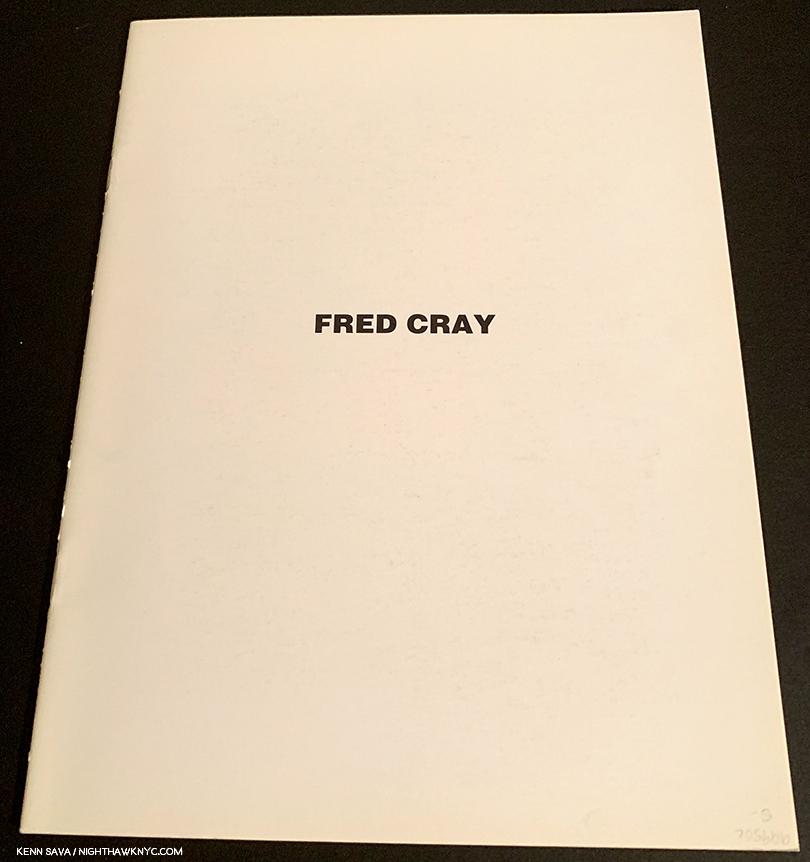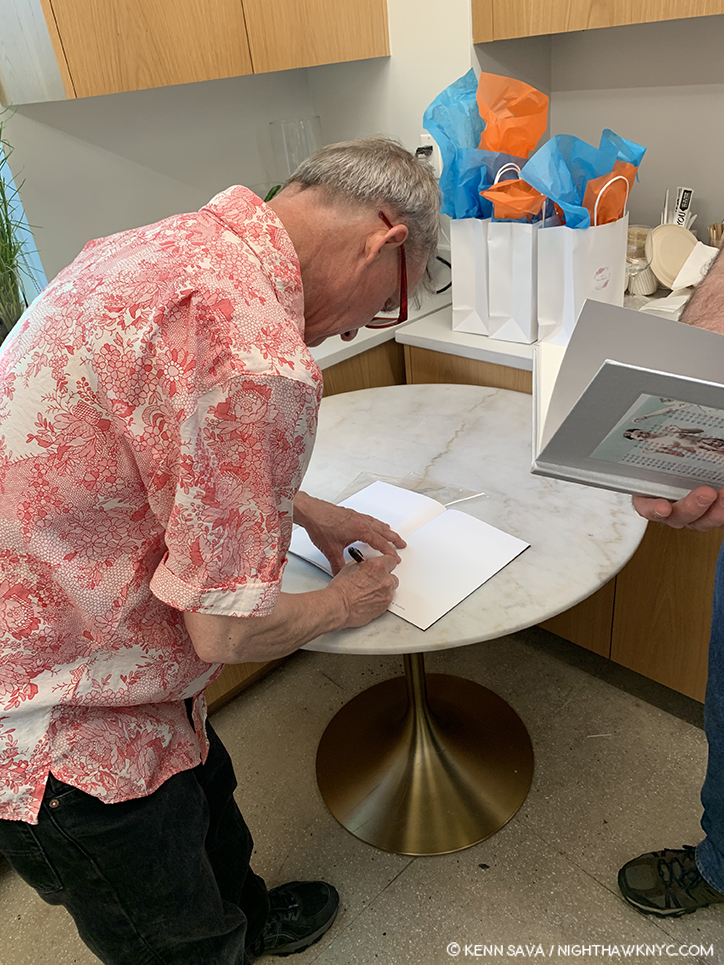Written by Kenn Sava
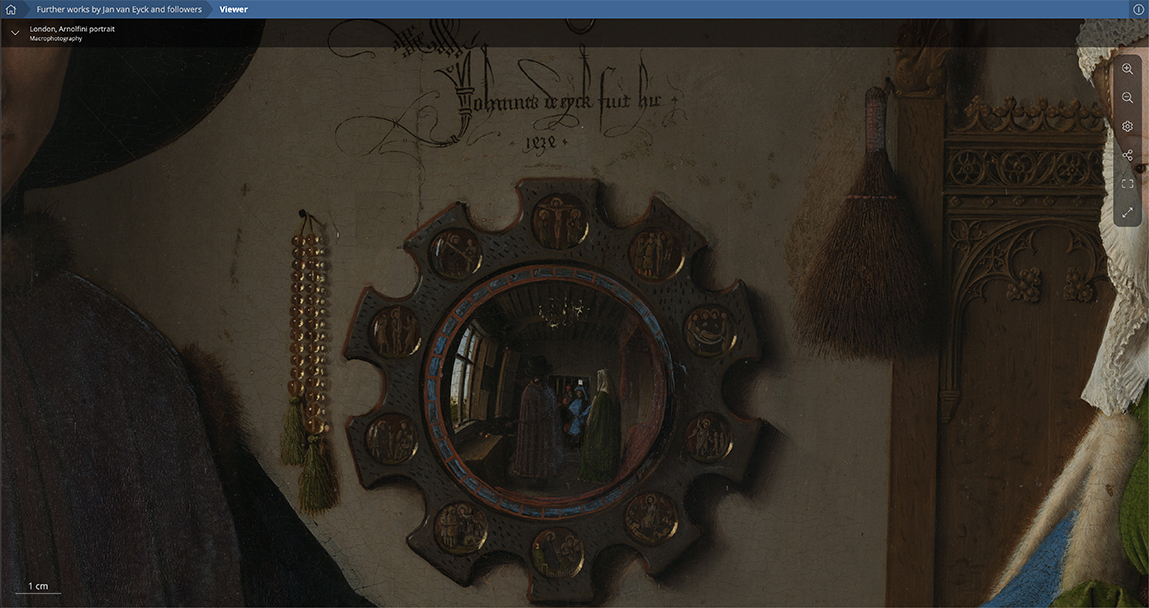
“Johannes van Eyck made this,” the inscription by the Artist reads in this detail from “The Arnolfini Portrait,” which he also dated 1434. Closer to Van Eyck Photo.
Is Jan van Eyck the “greatest” Painter ever?
“Wait? Kenn Sava call someone ‘the greatest’ anything? I thought he didn’t believe in qualitatively comparing Artists or Artwork?” I don’t. There’s no such thing as “the best” in the Arts. Yet, the work of Jan van Eyck seems to me to be beyond the boundaries of normal discourse. I’m asking technically now. In that sense, and instead of “greatest,” let’s put it this way- Does Jan van Eyck (and, possibly, his brother Hubert, who may or may not, have worked on some or many of his early pieces before passing away in 1426) remain unsurpassed among Painters? If you or yours know of a greater technician in the history of Painting, by all means, set me straight. I’d LOVE to see him or her. Still, technique is only a means to an end, right? On its own, it doesn’t make something “Art.”
When I was a kid, freshly a teen, I discovered the work of Jan van Eyck (JvE) in this book-
I’d never seen anything like it. I still haven’t. There are a lot of ways you can discover an Artist you previously didn’t know today. Back then, coming across a book on him or her in a library, bookstore or a friend’s house, were the primary means for me. It’s now one of a number of primary means. In what was a black & white world at the time, impossible to imagine today, seeing this kind of color was part of the revelation. The closer I’ve looked over the decades, I’ve found his work is like the proverbial onion- There’s MUCH more going on in it than beautifully meets the eye at first look, with virtually every single detail carrying layers of meaning that have taken the intervening 600 years to begin to unravel.
On my 17th birthday, the first day I was eligible for it, I went to get my driver’s license- a big deal as we all know for anyone heretofore confined to riding bikes or walking. I went to take my eye test and the tester said, “Read the chart on the wall.” “What wall?,” I replied. Crushed. I had to go and get glasses. Finally, I passed and got the treasured document.
Freedom!
A week or two later, bright and early one August Saturday morning, I took my first extended driving trip. I got in the family car and drove it to Washington DC by myself, a trip that took me well over 5 hours. I parked in front of the National Gallery of Art and went inside. I looked at one Painting for about 30 minutes, and left. I got in my car and drove all the way back.
A few months later, I did the same exact thing, again. I went back to see Jan van Eyck’s The Annunciation a second time.
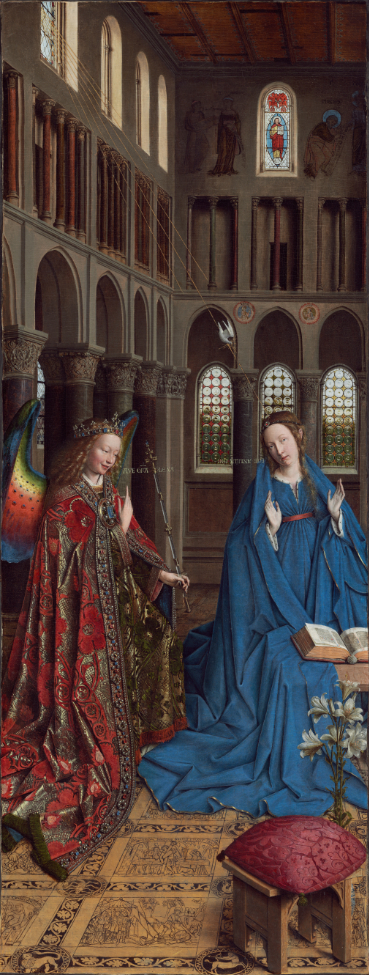
Jan van Eyck, The Annunciation, c. 1434/1436, Oil on canvas transferred from panel, 35 1/2 x 13 7/16 inches. National Gallery of Art, Washington, Photo.
For me, this work summed up everything I loved about Painting, most of which I wasn’t able to put into words at the time. Only now, looking back on it decades later can I see in it the germs of any number of things that have continued to interest me since. This time, however, I looked at a second Painting, Leonardo da Vinci’s Ginevra de’ Benci, (c. 1474/1478, Painted only about 40 years later!1 to this day my favorite Leonardo (“favorite” does not mean “best”).
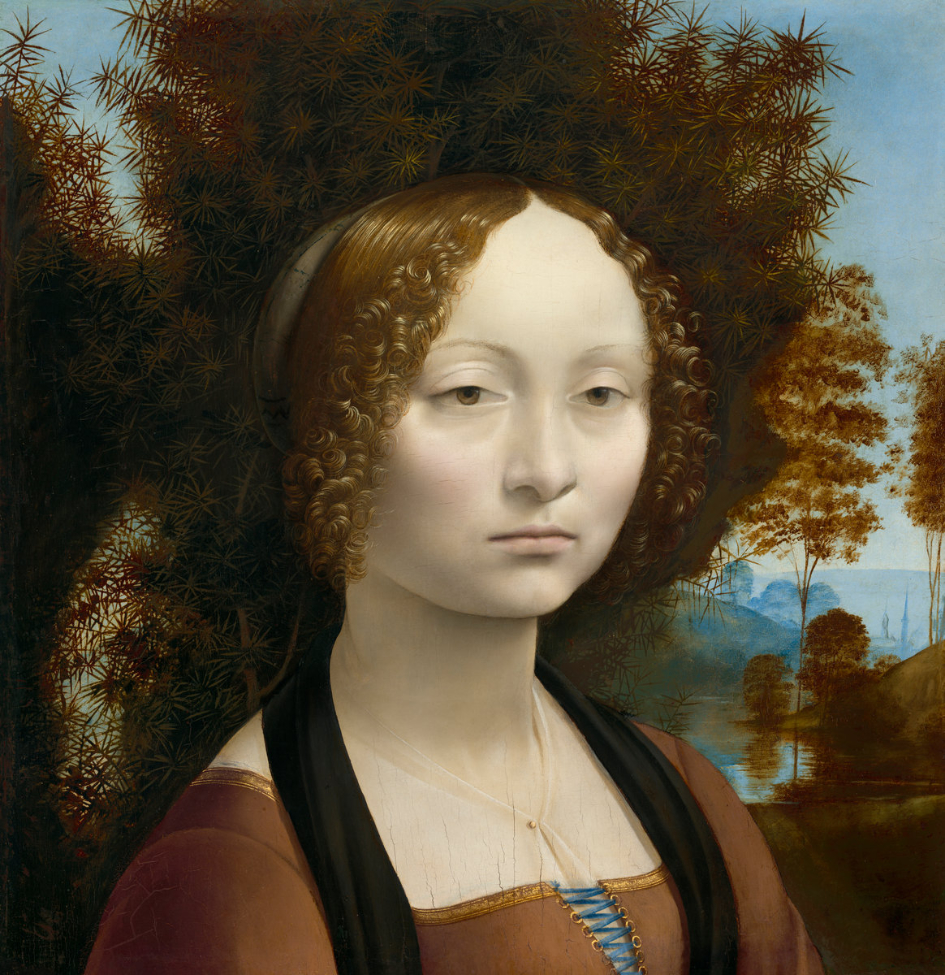
Leonardo da Vinci, Ginevra de’ Benci, c. 1474/1478, Oil on panel, 15 x 14 9/16. Historians believe that at one point this portrait had folded arms below what remains today. National Gallery of Art, Washington, Photo
I then stopped in the gift store and bought a poster of the Van Eyck, I got in my car and drove home.
Such was the effect Jan van Eyck’s work had on me. It still does.
These days, I don’t have to get in a car and drive almost 6 hours to see one of Van Eyck’s incomparable masterpieces. Now, I can see much of what the Master created that resides in museums all around the world without leaving my chair. In fact, I can now see them INFINITELY closer than even Mr. Van Eyck may have. How astounding is that?
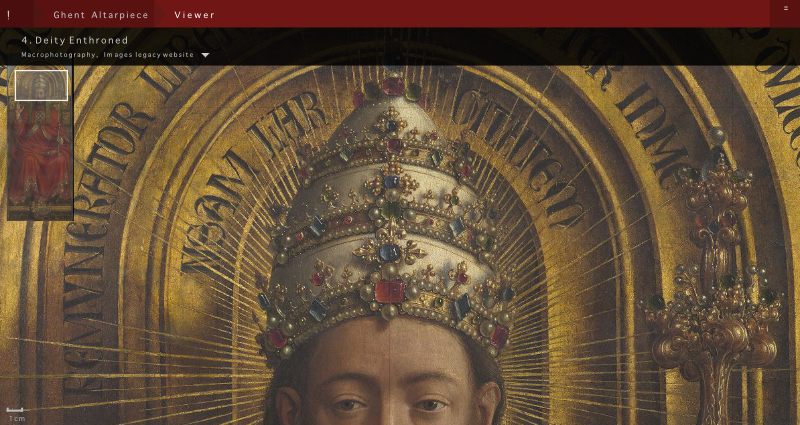
Jan & Hubert van Eyck, Detail of the “Deity Enthroned” section from the Ghent Altarpiece, before restoration. Note the 1cm scale in the lower left corner. 1cm is .4 of an inch! Screenshot of Closer to Van Eyck Photo.
Closer to Van Eyck centers around the incomparable “Ghent Altarpiece” (as it is known today. The Artist’s name for the work is unknown) and its ongoing restoration- all 11.5 by 15.5 feet of its inside AND 11.5 by about 7 3/4 feet of its exterior (seen when the panels are closed)!
Well, what we have of it after its six century journey that saw part of it looted by Napoleon’s armies in 1794, the whole stolen by the Nazis in WW2 and stored in a salt mine. One of its panels (the so-called “Just Judges,” seen in a copy in the lower left corner of the Photo below, which may contain a Self-Portrait) was later stolen by an incredibly selfish sacristan and has still not been recovered.
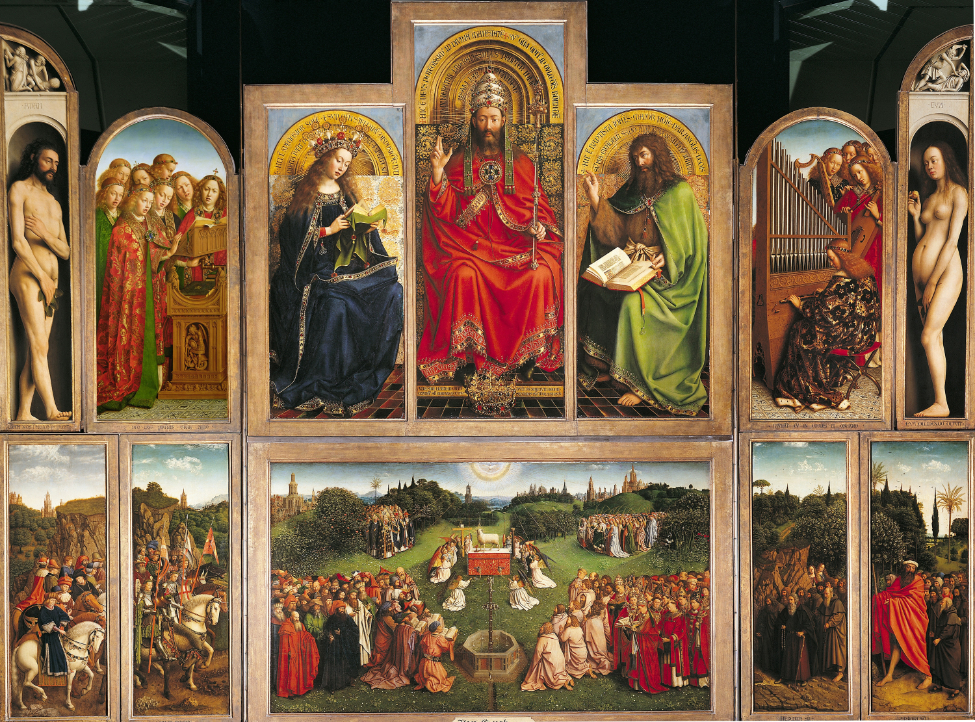
Hubert & Jan van Eyck, the “Ghent Altarpiece,” 11.5 by 15.5 FEET, mid-1420s to 1432, Oil on 24 panels, 12 seen here with open. In this Photo, the work is seen prior to restoration which has begun with the exterior panels. NPR Photo.
For me, the Ghent Altarpiece is on the shortest of short lists of the supreme accomplishments of human creativity.
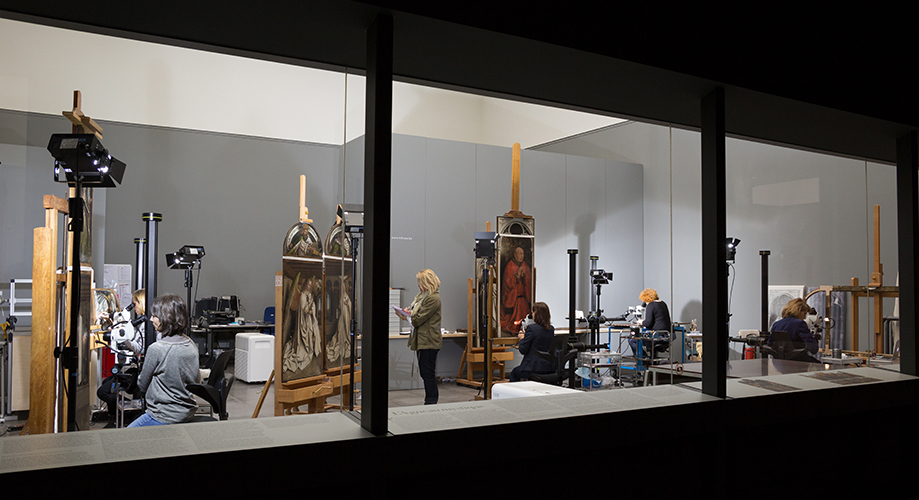
The public restoration of the exterior panels of the “Ghent Altarpiece” at the Museum of Fine Arts, Ghent (i.e this is the view museum visitors can have of the ongoing work). Photo: KIK-IRPA, Brussels. From Closer to Van Eyck.
On Closer to Van Eyck you can study each of the 20 panels in the infinite detail of 100 billion pixels in macrophotography, infrared macrophotography, infrared reflectography and x-radiography. The Ghent Altarpiece would have been enough- MORE than enough to make Closer to Van Eyck one of the world’s most essential Art references, but it’s been continually expanded to the point that it now covers THIRTY SIX other works by, or attributed to, Jan Van Eyck from museums all over the world.
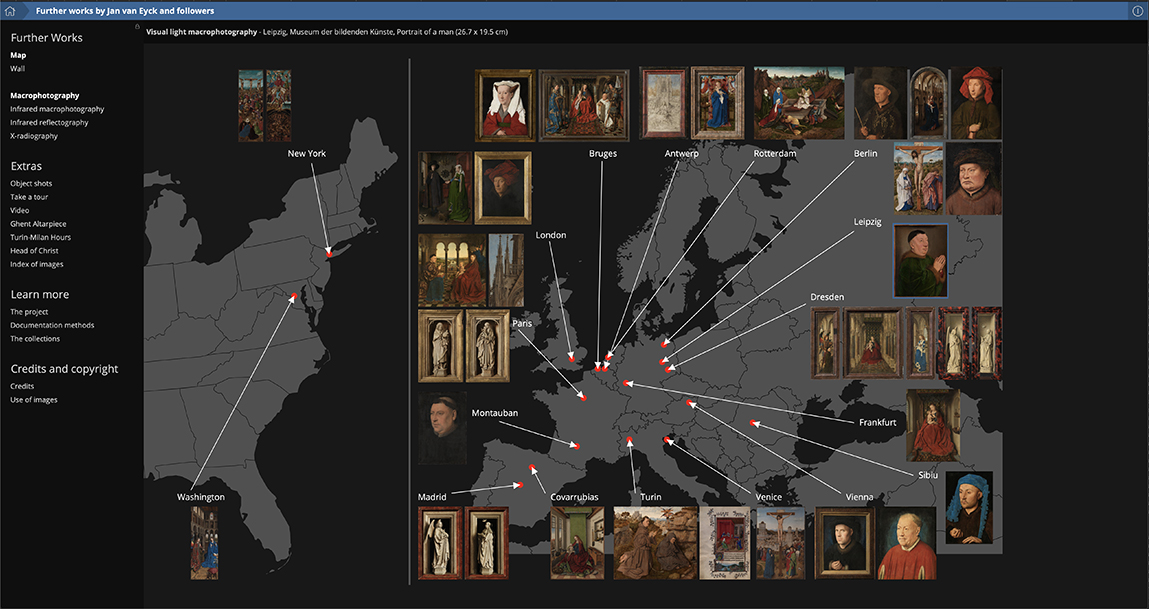
“Further works” above and beyond the “Ghent Altarpiece” by, or attibuted to, JvE that can be studied in extraordinary detail on Closer to Van Eyck, each one a masterpiece in its own right now numbers an incredible 36.
These include my old friend The Annunciation in DC. Good thing. I haven’t owned a car in over 20 years.
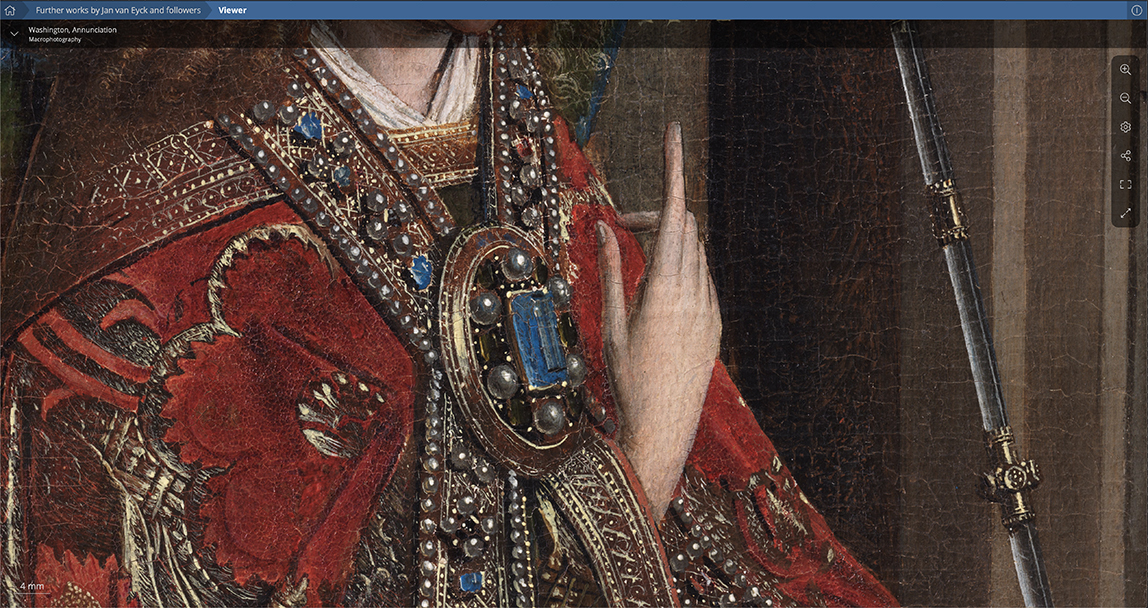
I didn’t see it like this. Detail of The Annunciation. Notice the scale on the lower left. 4mm is .15 of one inch! Closer to Van Eyck Photo
Having the chance to study Van Eyck to this degree should lead to countless new discoveries about his work and working methods. It may also help answer some long standing questions, of which there are too many to number. Beginning, perhaps, with this one. Even to this lay viewer, at normal magnification, it’s obvious The Annunciation is not the co-called “hyper-realism” or whatever other meaningless box some try to use to stick Artists in. For all of the astounding detail in The Annunciation, and other works by JvE, the figures of Mary and the Angel are oversized relative to the room they’re in. It goes without saying that for one of the supreme Masters of Painting this was intentional.
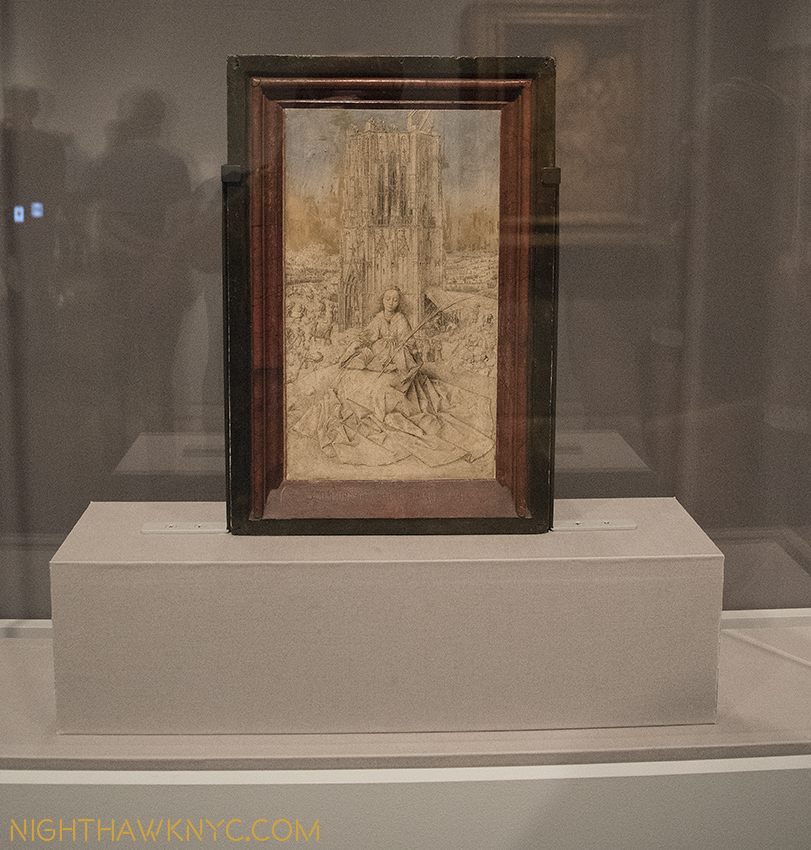
This is as close as I’m ever allowed to study a Van Eyck in person. ” Saint Barbara“ looms larger than life here in this incredible Drawing by Jan van Eyck from 1437 that’s barely 12 inches tall. I don’t believe this is due to the Saint being closer to the viewer. From my piece on Unfinished at The Met Bruer in 2016.
Why did he choose to do this? David Hockney may provide an insight. In A Bigger Message: Conversation with David Hockney, by Martin Gayford, Mr. Hockney says, “If you look at Egyptian pictures, the Pharaoh is three times bigger than anybody else. The archaeologist measures the length of the Pharaoh’s mummy and concludes he wasn’t any larger than the average citizen. But actually he was bigger – in the minds of Egyptians2.” From there, you can look as closely and as deeply as you want. No matter how closely I look, the wonders never cease.
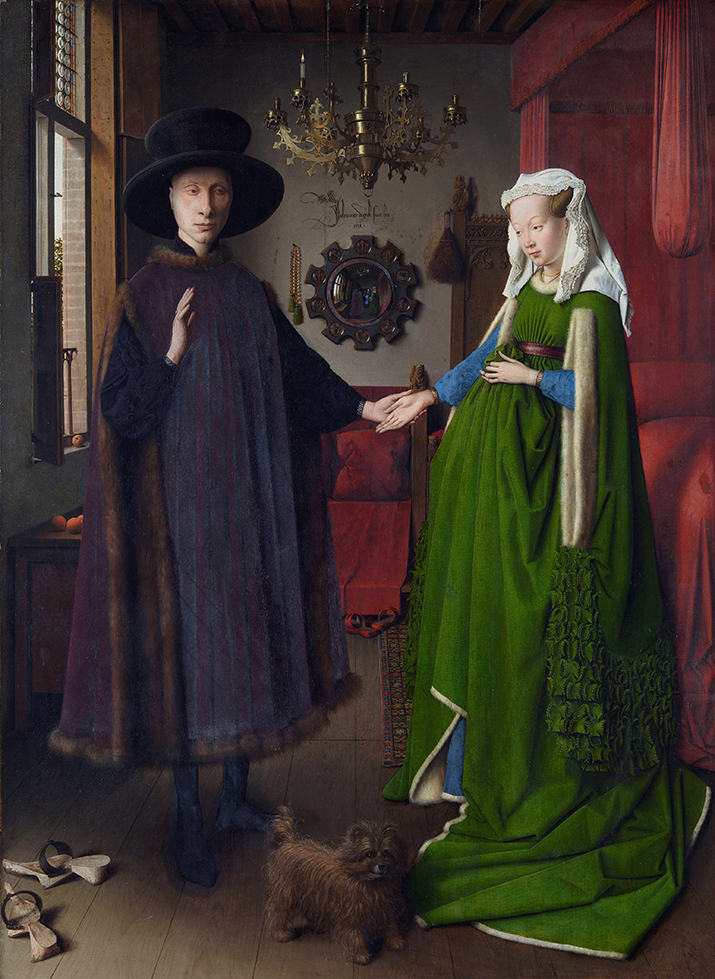
“The Arnolfini Portrait,” Full common title, “Portrait of Giovanni(?) Arnolfini and his Wife,” (Title given by the Artist is unknown), Signed(!) and dated 1434, 32 1/4 x 23.6 inches, National Gallery, London, Photo.
Two works recently added to Closer to Van Eyck are two of his most renowned masterpieces that reside at The National Gallery, London, home of “The Arnolfini Portrait” and “Portrait of a Man (Self Portrait?).“
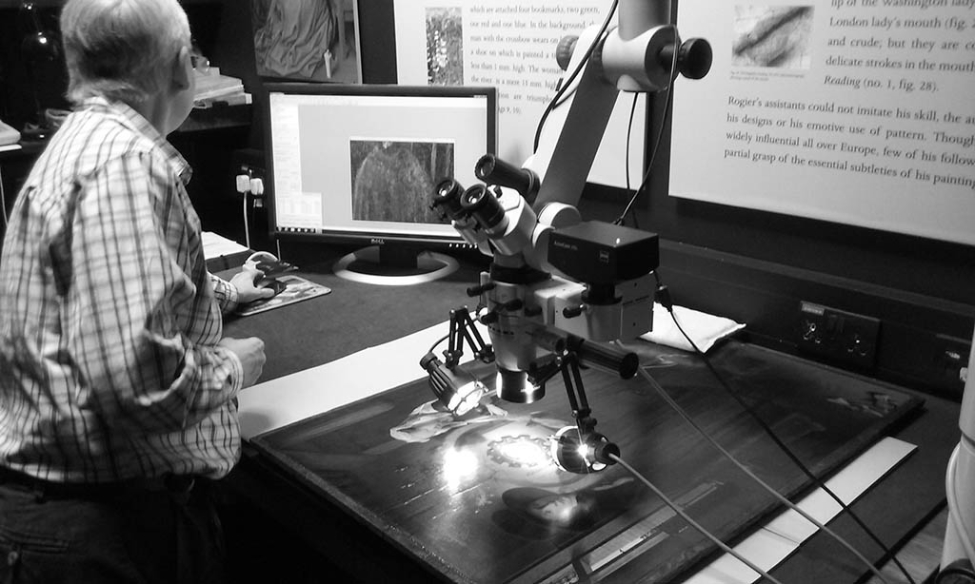
Ready for its close up. “The Arnolfini Portrait” lying on the table to the right in September, 2017. Closer to Van Eyck Photo.
I spent an hour in the small gallery that contained them during my last trip out of NYC overnight in 2012 the day after I saw the once in a lifetime Leonardo da Vinci: Painter at the Court of Milan, at London’s National Gallery, the most complete display of Leonardo’s surviving Paintings ever mounted. It’s difficult for me to imagine a harder test than seeing the work of any Artist virtually side by side with that of Leonardo’s. Eight years later, the time I spent in that small gallery remains indelible. Seeing “The Arnolfini Portrait” in person was overwhelming. Then, I saw this-
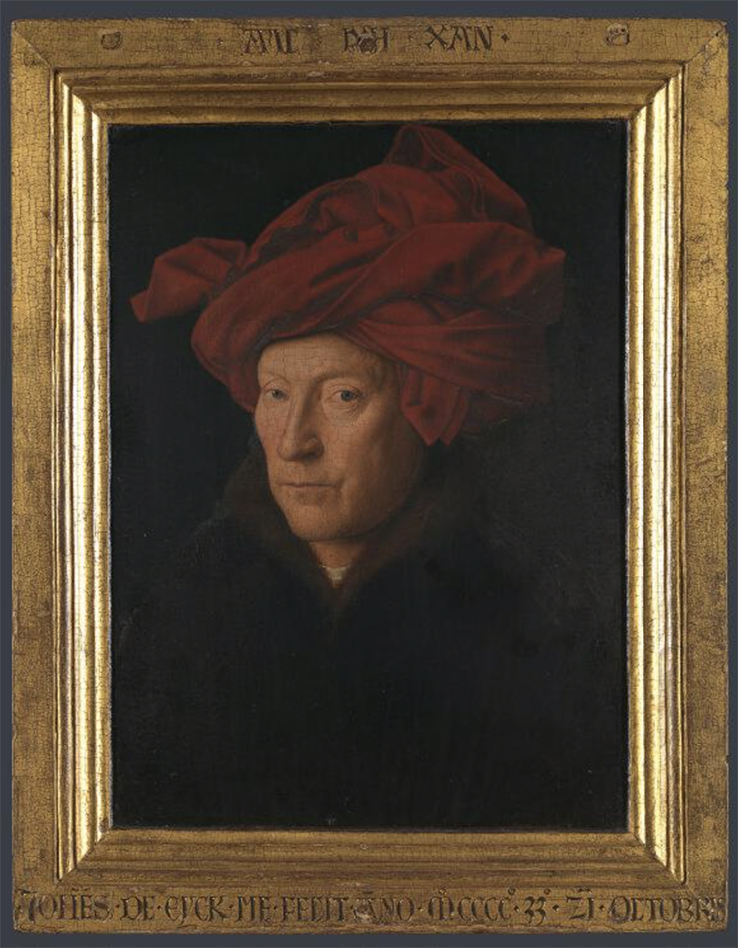
Portrait of a Man (Self Portrait?), 1433, Oil on oak, 10 1/4 x 7 1/2 inches. National Gallery, London, Photo.
Though I’d seen it in books countless times, standing right in front of it, all of a sudden, I was gripped by an unescapable feeling. This IS him! Why do I believe that Portrait of a Man (Self Portrait) is a Self Portrait? It doesn’t feel like the kind of portrait that would result from a commission- unless the commissioner was quite unconventional, and not one of the other portraits JvE did were “unconventional” in this sense. For one thing, he has a stubble. It’s too hard for me to believe that anyone commissioning a famous Artist (which he was) at the time would want to be immortalized with stubble. For another, the chaperon on his head is up on the sides. It looks positively sculptural- almost like a John Chamberlain. This has the look of someone who’s busy working on something that involves frequent turns of the head, often quick ones, and is keeping it out of the way by tucking it up on its sides. Compare this work with “Portrait of a Man with a Red Chaperon” in Berlin, also on Closer to Van Eyck. Here, the sitter has no stubble and his chaperon is very neatly positioned on his head. Also, the sitter looks straight ahead. In the London Portrait of a Man, he looks askance at the viewer- like he would if he were Painting himself by looking in a mirror- as David Hockney surmises in his revolutionary and essential book, Secret Knowledge: Rediscovering the Lost Techniques of the Old Masters. Finally, the sitter looks out at us over almost 600 years with a quiet confidence and surety that, along with that almost avant-garde chaperone on his head, convinces me that here is a very unique man, one with the confidence to show the world, and time immemorial, who he really is, doing what he loves doing. Jan van Eyck may have Painted himself in reflection in the famous mirror in “The Arnolfini Portrait,” and in one or two other works. These may provide some additional insight when looking at Portrait of a Man.
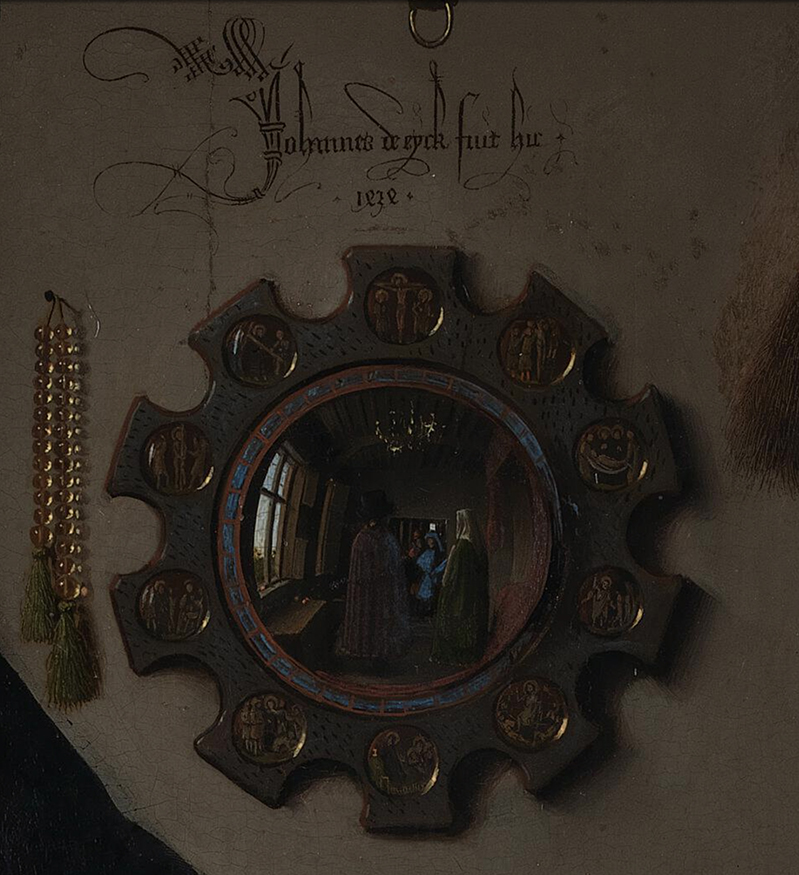
Jan van Eyck, Detail of the signature and the mirror immediately below the chandelier, seen further below, from “The Arnolfini Portrait.” It’s long been thought there’s a reflected “Self Portrait” in it of the Artist standing in the doorway in blue. Certainly an “unconventional” one, if it is. Velazquez borrowed this idea in Las Meninas, 222 years later in 1656. Notice the miniature scenes from the Passion of Christ around the mirror, and the reflected chandelier(!), all the while bearing in mind that when I measured this section in Photoshop, the entire mirror, with its frame, measured 3.85 inches in diameter! This is the closest we have been able to study this…until now. National Gallery, London, Photo
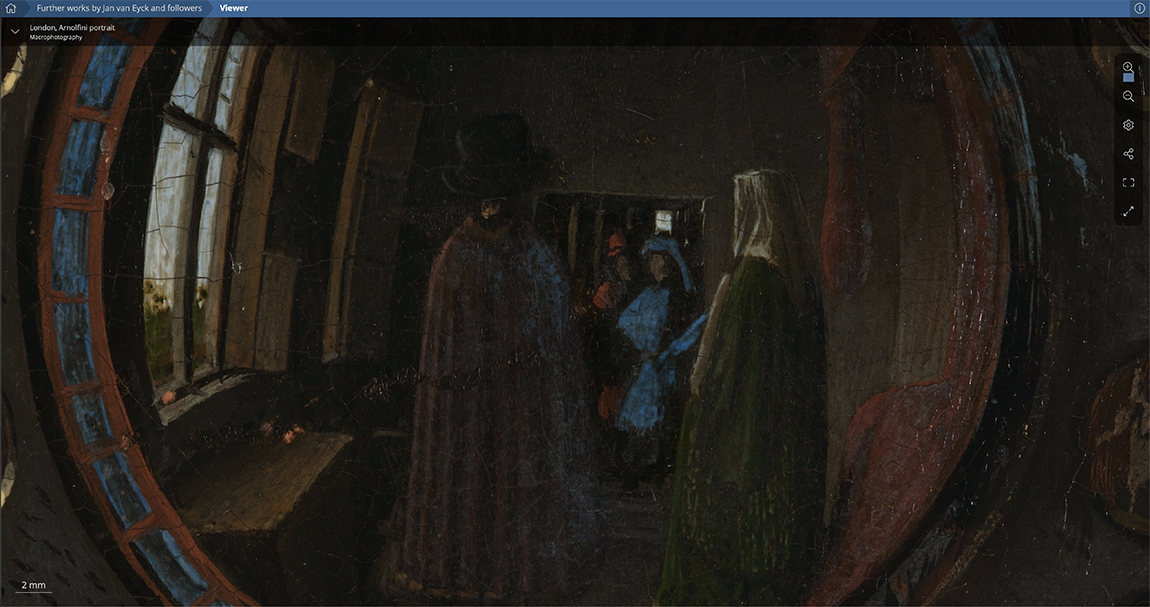
“The Arnolfini Portrait” has now been added to Closer to Van Eyck. The public has never seen it like this. Finally(!) we can see what is going on in the famous convex mirror. A number of historians believe JvE is in the blue coat. Seeing this, I now wonder if he wouldn’t be the gent in the back in the red. 2mm is .078 of one inch!
Among the others, perhaps most fascinating to me are the two figures in the middle distance of Virgin of Chancellor Rolin, the figure on the right in the red chaperone I suspect just might be a Self-Portrait of Jan with his mysterious brother Hubert to the left.
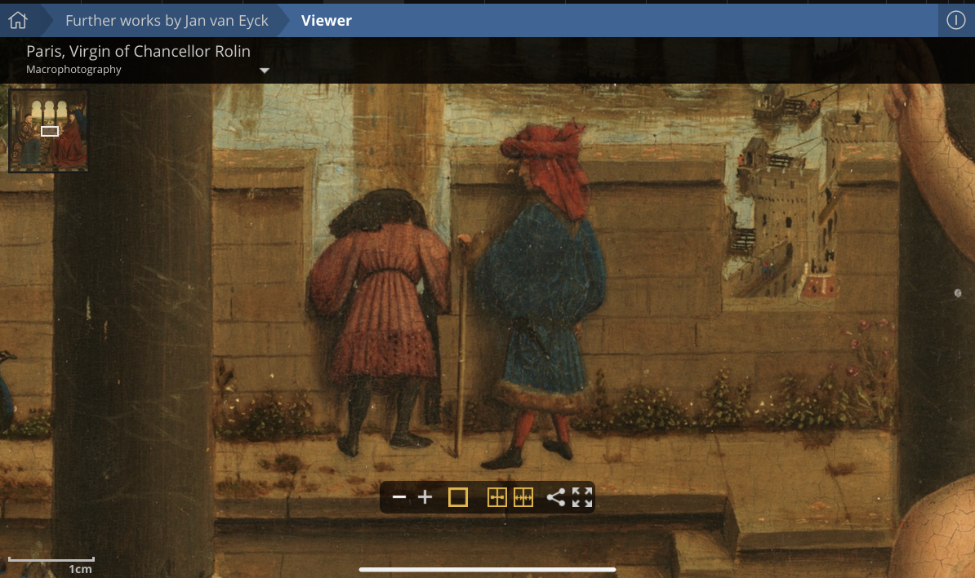
Detail of the middle distance of Virgin of Chancellor Rolin, in the Louvre, just one of the “other” works by/attributed to JvE that are included on Closer to Van Eyck. I’m stuck on the idea that this is a portrait of Jan and his brother, the virutally lost to history, Hubert van Eyck. Note the red chaperone and the nose on the figure I believe may be Jan, and compare both to Portrait of a Man. From Closer to Van Eyck.
IF this is a dual portrait of the brothers it would be the only one known of Hubert during his lifetime3 One of 5 surviving documents that mention him during his lifetime say he was a Painter “without equal.” Well, he was older than Jan. In it, we see the face of the man in profile showing a prominent nose, and his red chaperone is down as he is not working. Finally, in Portrait of a Man, we don’t see the sitter’s hands, as we do in a number of JvE’s other portraits. This leads me to believe they were busy Painting. All of these reasons, and a gut feeling, reinforce my feeling that the Portrait of a Man is a Self-Portrait. Interestingly, around the frame of that work (see Photo posted earlier), apparently in his own hand, is written “Als Ich Can,” JvE’s motto (“As I can,” with “Ich” a play on Eyck) along the top, and “Jan van Eyck made me on 21 October 1433” along the bottom. Of course, the experts have argued about this back and forth for almost 600 years. I’m convinced. Ok. Now, back to world peace…
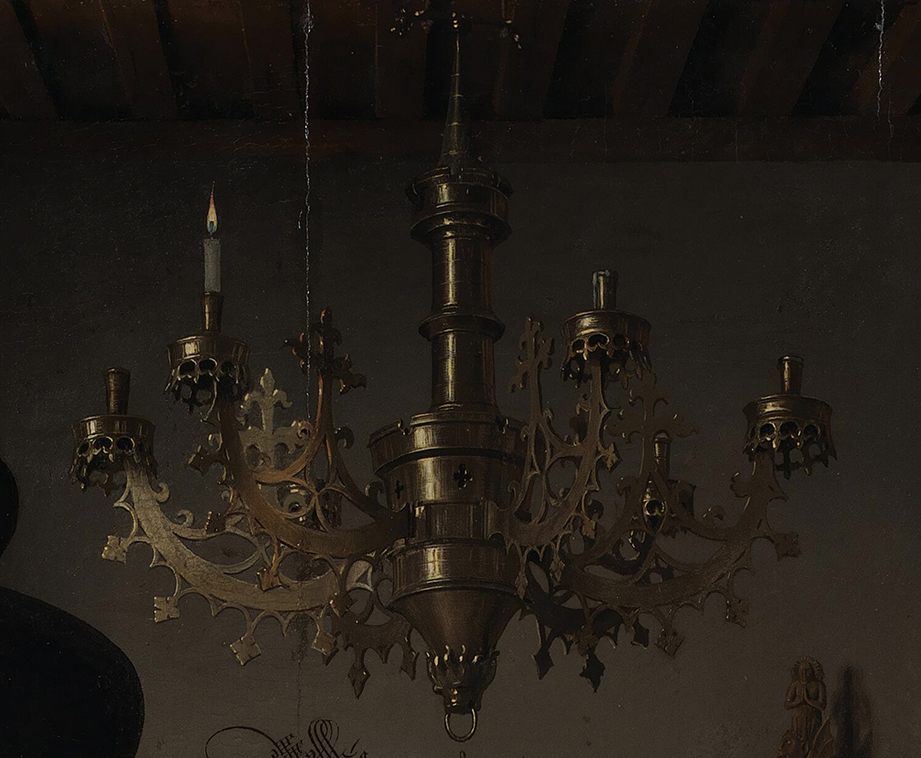
Detail of “The Arnolfini Portrait.” The section of the chandelier beginning at the top of the sole flame is about 5 inches tall by 6.7 inches wide. HOW could anyone paint this in 1434? The sole lit candle makes me believe this Painting is a memorial commissioned by the man, Giovanni Arnolfini, who JvE may have also Painted by himself, for his wife, Costanza Trenta, who died the year before, and who stands under extinguished candles. National Gallery, London, Photo
Part of me has been searching for “the next Van Eyck” my whole life. That is both unfair and unrealistic. Times were so different back in 1400 I’m sure I can’t begin to imagine it. Oil painting was, virtually, a brand new medium at the time, and for centuries it was said (by Vasari, apparently incorrectly) that Jan van Eyck had “invented” oil painting. If he didn’t, he was certainly among the very first to master it on the highest level. The craft and Art of Painting were different then, too, apparently. In Secret Knowledge, David Hockney sheds much light on what may, or may not, have been some of the techniques Artists from around JvE’s time, forward, including Vermeer, may have used to create some of these works which, like the chandelier in Van Eyck’s “The Arnolfini Portrait,” seem to border on the impossible. Optics. If they did use optics, in no way does that diminish the achievement, in m view.
The evidence for JvE’s candidacy for technical supremacy may never be presented better, or in more detail, than it is on Closer To. Leaving that pointless question aside leaves you free to look and marvel. You will never see it better in person- no matter HOW close they let you get to his work with your naked eyes. The ramifications of this are staggering to consider. Among them, this quickly came to my mind-
Is THIS the future of seeing Art?
It’s not hard to think that, one day, museums might follow suit doing something similar with works in their collections and posting amazing, super high resolution macrophotography on their sites. In 100 years, will ALL museums be online with sites like this, where, no doubt for a fee, you can visit any work in their collection and study it in virtually infinite detail? I’m not sure how many Artworks I’d want to study as closely as I want to JvE’s. Most Art is best seen from a comfortable distance. Yet given the difficulties in seeing Art in person now almost anywhere- glare, uneven or poor lighting, inferior glazing, etc., etc, it’s a situation crying out for something “better.” And, we may get “something else,” until that “better” is found- if it ever is.
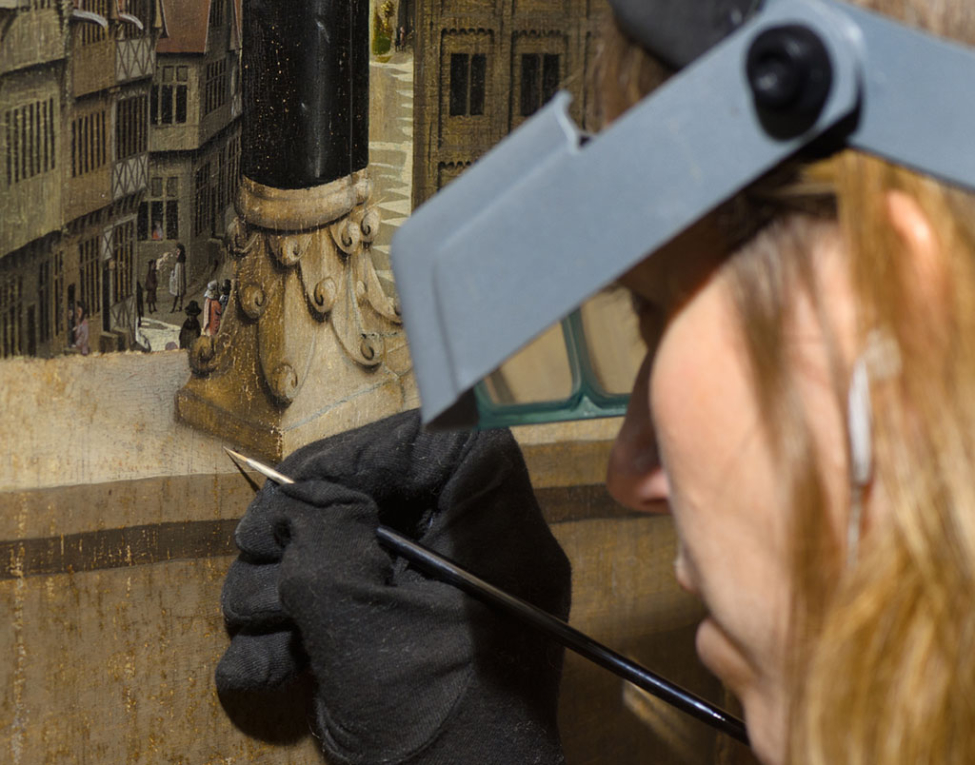
Panel XIV of the Ghent Altarpiece, during final inpainting. Saint Bavo Cathedral © Lukas-Art in Flanders vzw; photo: KIK-IRPA, Brussels. When I look at the Painting of this section, the miniature street scene in the background, only a small piece of it seen here, makes me wish JvE created more secular Art. From Closer to Van Eyck.
And so, for all of these reasons, I bestow the first NighthawkNYC Art Website of the Year Award on Closer to Van Eyck, which, like NighthawkNYC, is free- so far. In this one site, we get to see the distant past as never before. And, possibly, the future.
Rembrandt never left Holland during his lifetime. Closer to Van Eyck is making it possible for me to never leave NYC, again.
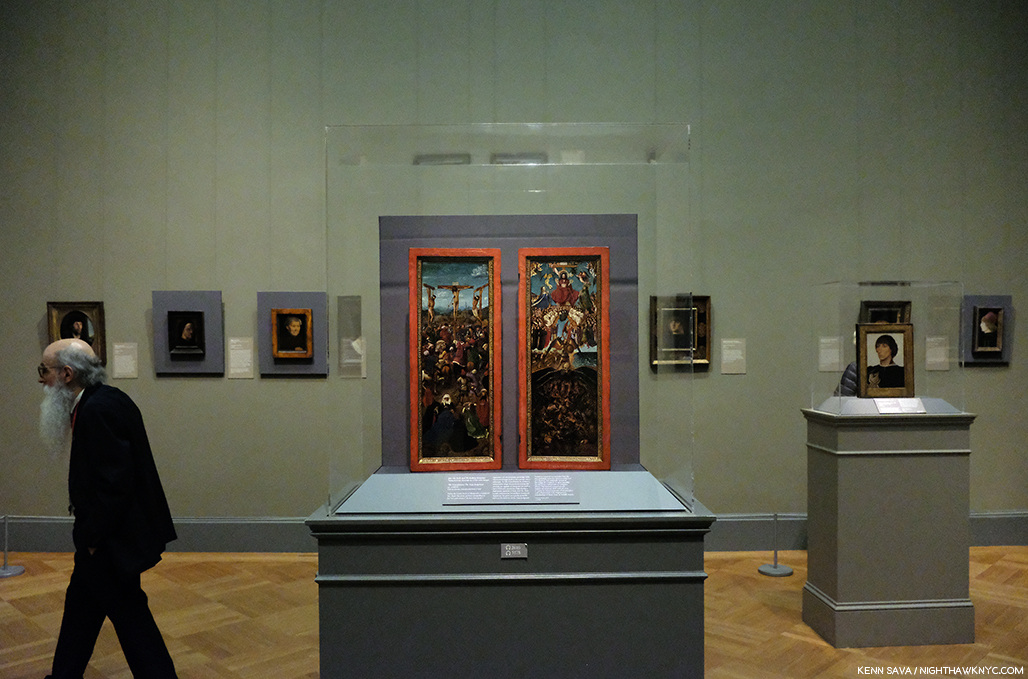
At least NYC is home to three works thought to be by “Jan van Eyck and Workshop,” as all three are labeled. “The Crucifixion” and “The Last Judgement” seen above at The Met (both may be seen on Closer to Van Eyck), and “The Virgin and Child with St. Barbara, Stl. Elizabeth and Jan Vos,” on view over at the Frick Collection. By the way, that gentleman existing to the left is the same Met Guard Fred Cray featured in his PhotoBook, Changing of the Guard! Well? It’s a small world, and getting smaller…
*-Soundtrack for this Post is “You Can Leave Your Hat On” by Randy Newman.
My thanks to Lana Hattan.
NighthawkNYC.com has been entirely self-funded and ad-free for over 6 years, during which over 250 full length pieces have been published. If you’ve found it worthwhile, you can donate to keep it going & ad-free below. Thank you!
Written & photographed by Kenn Sava for nighthawknyc.com unless otherwise credited.
To send comments, thoughts, feedback or propositions click here.
Click the white box on the upper right for the archives or to search them.
For “short takes” and additional pictures, follow @nighthawk_nyc on Instagram.
Subscribe to be notified of new Posts below. Your information will be used for no other purpose.
- It is reported that Jan van Eyck’s portraits were admired in Italy in the 1430’s. Is it possible Leonardo knew the work of Van Eyck? ↩
- eBook version, P.61 ↩
- Some believe Hubert may have Painted this. Some others believe Jan may have contributed. I’m skeptical on both counts for any number of reasons. For starters, I can’t believe either would have been capable of the terrible geometry of the grave. ↩

